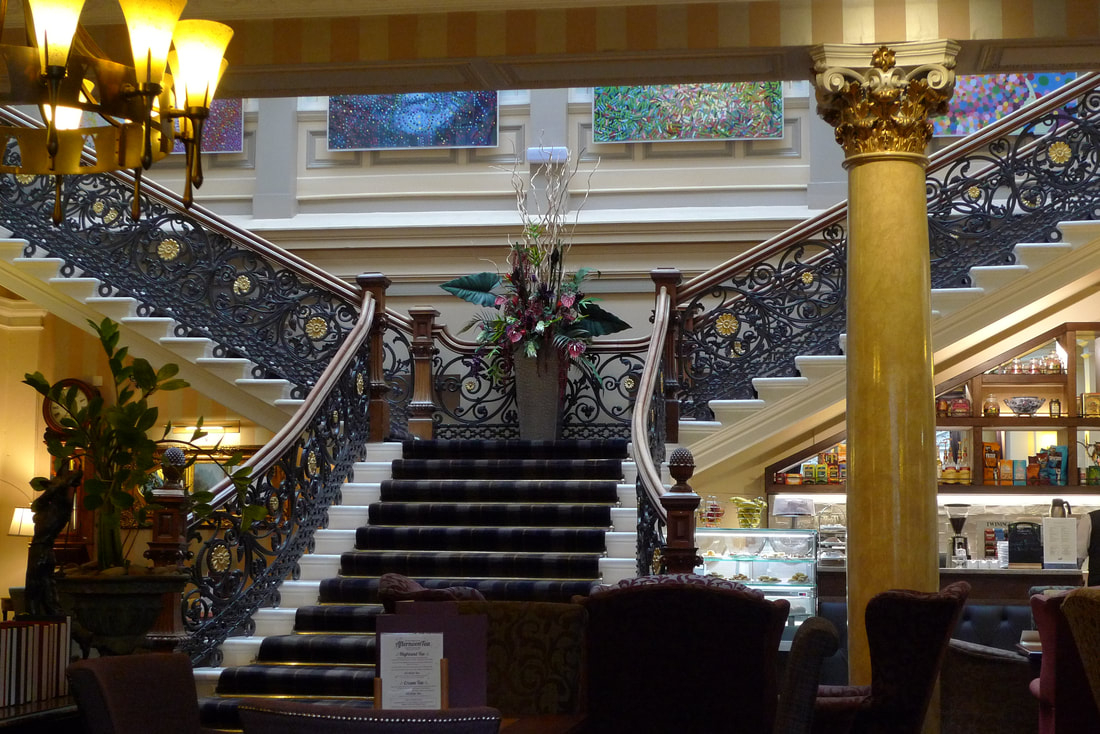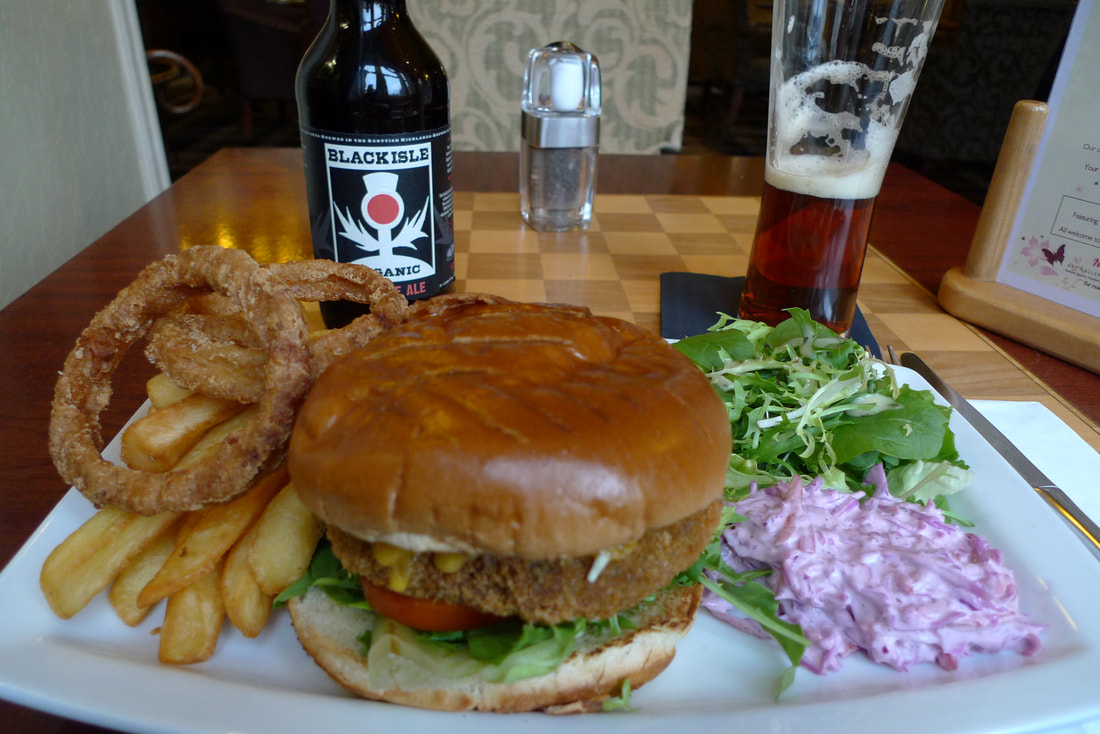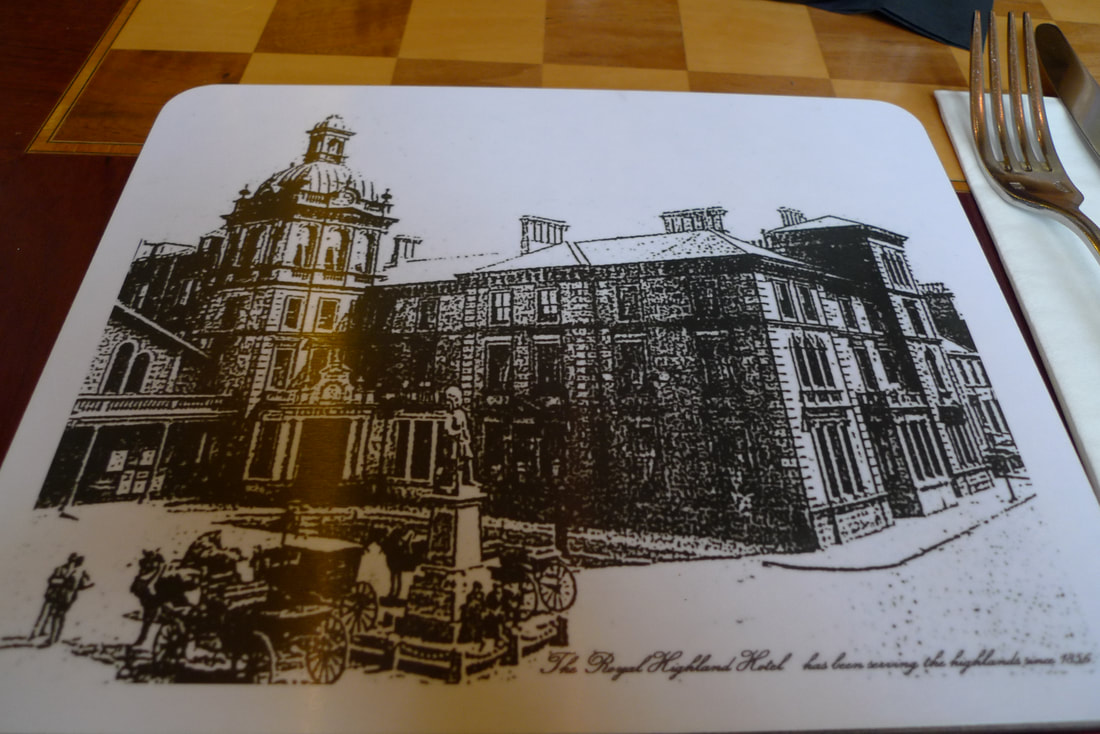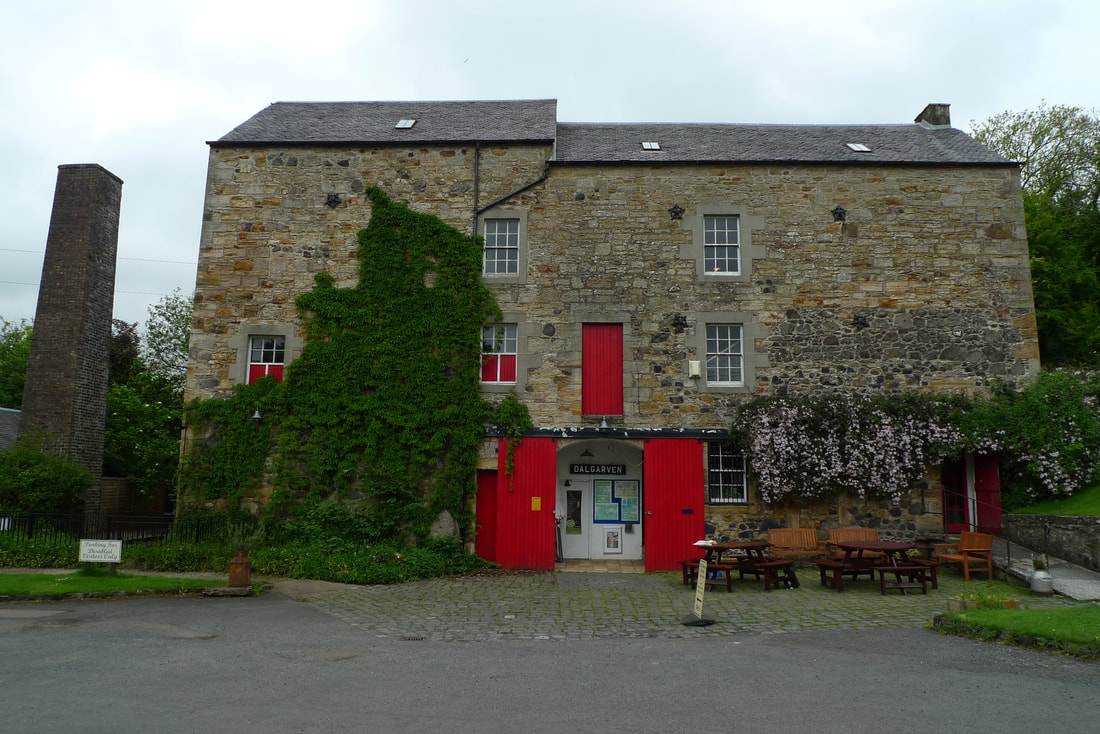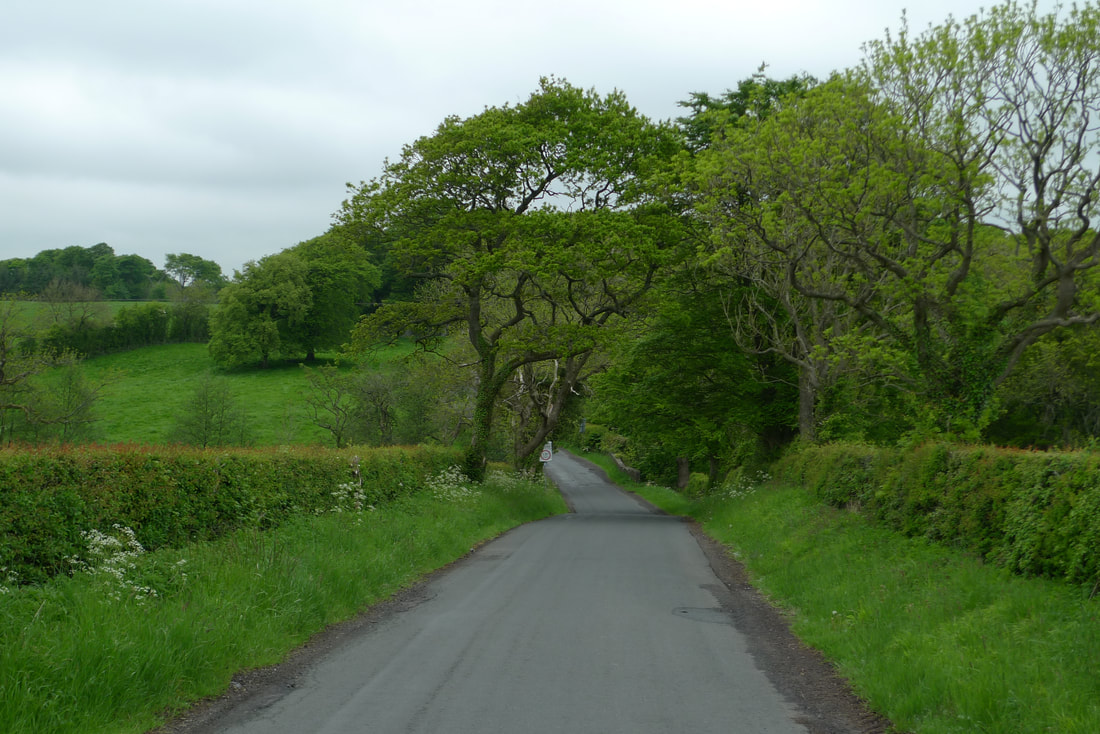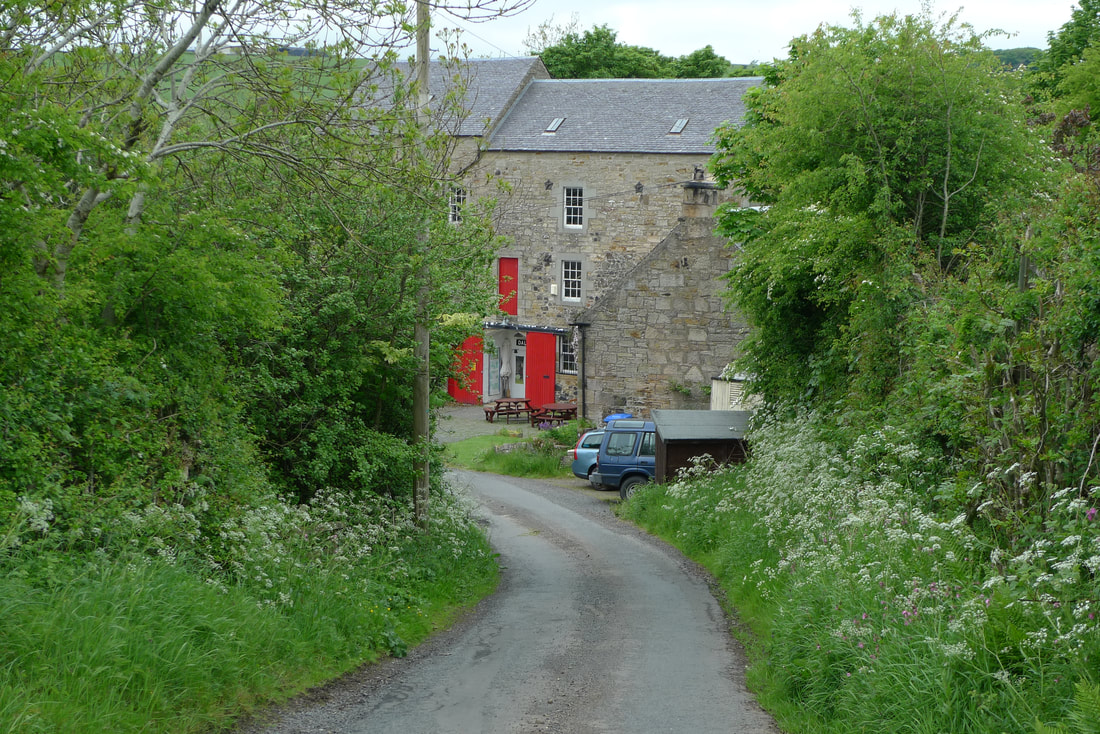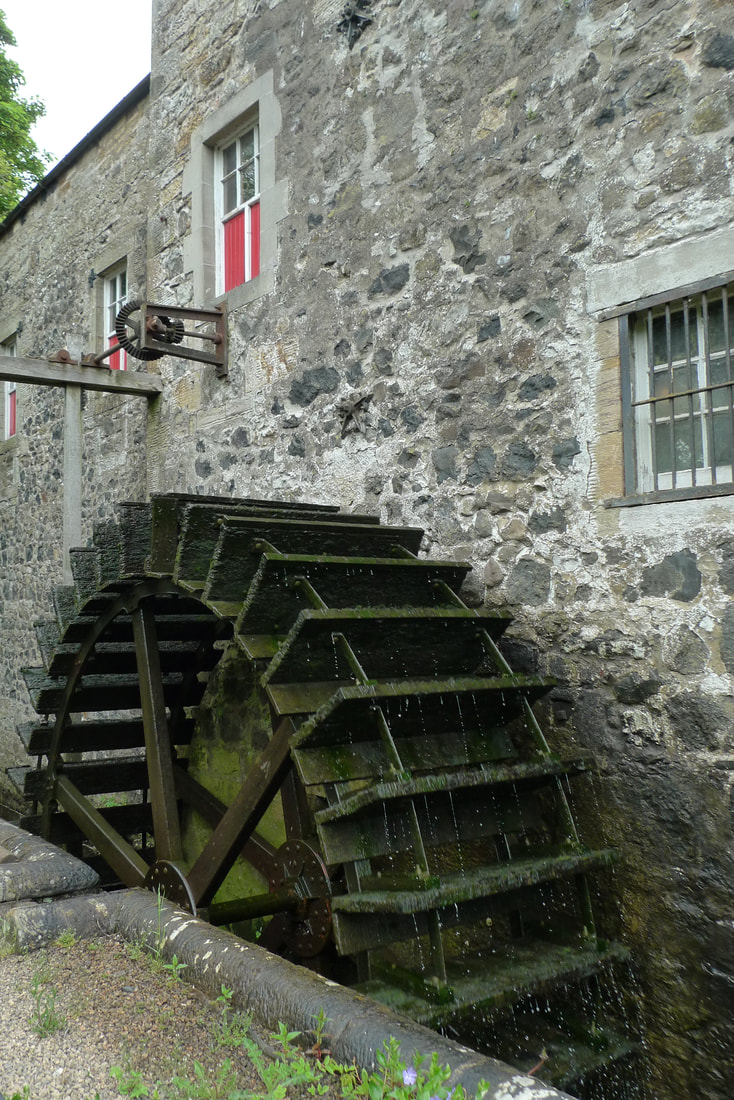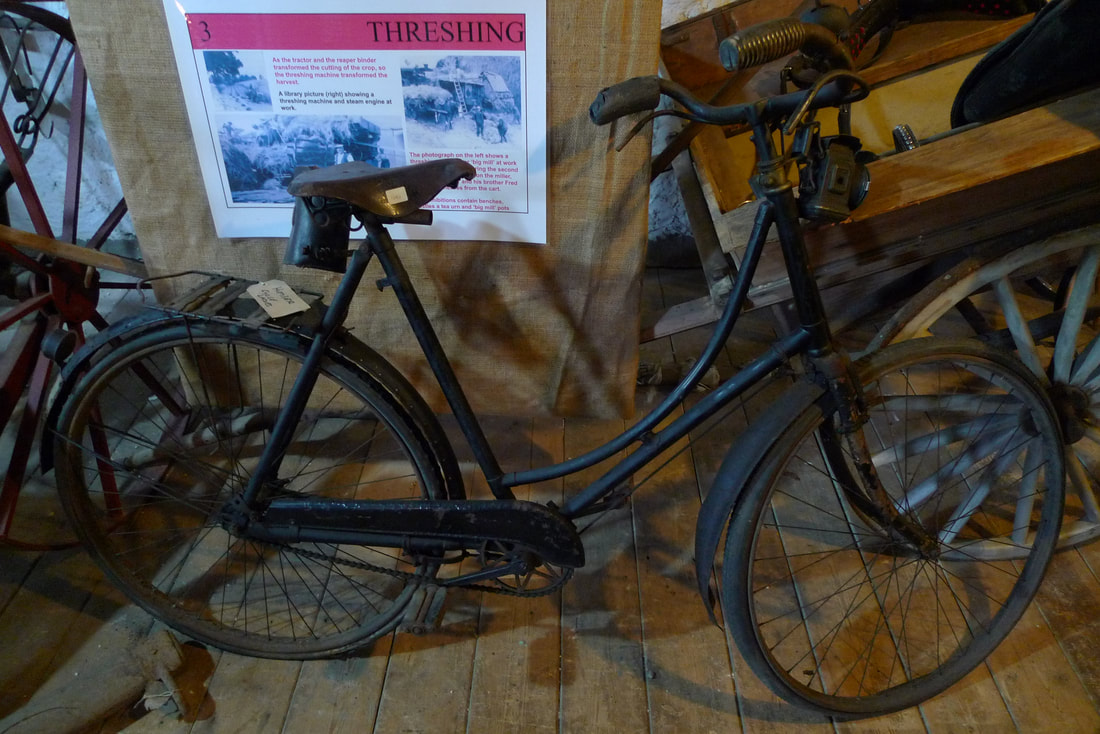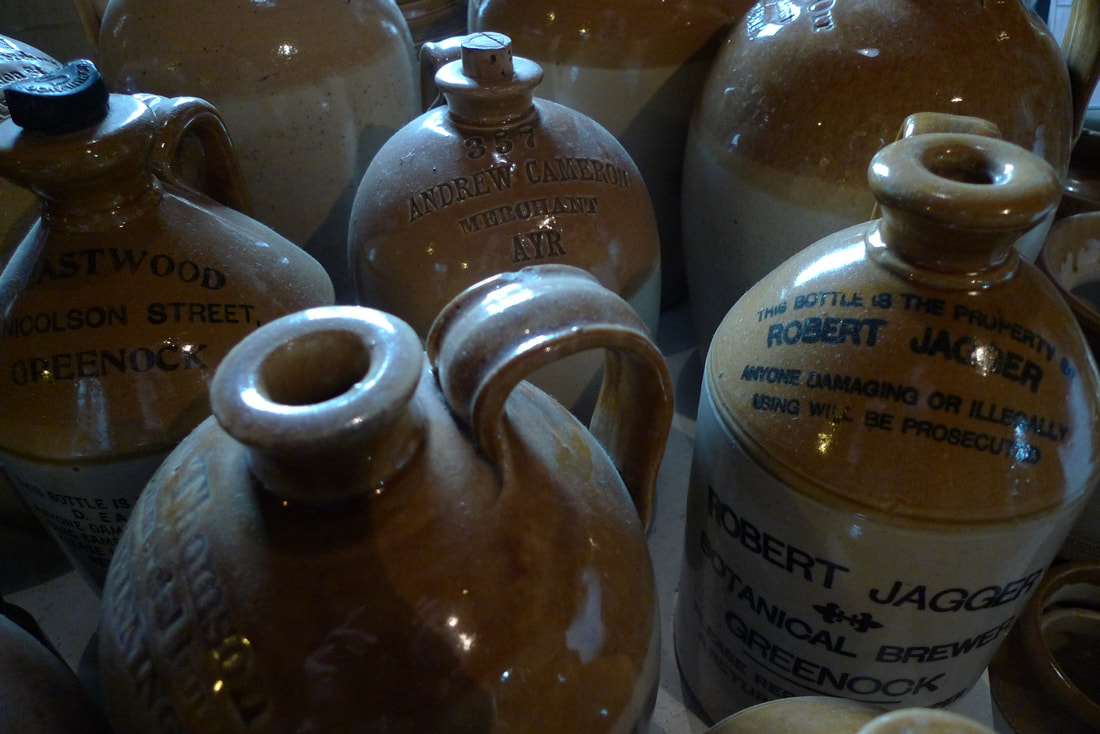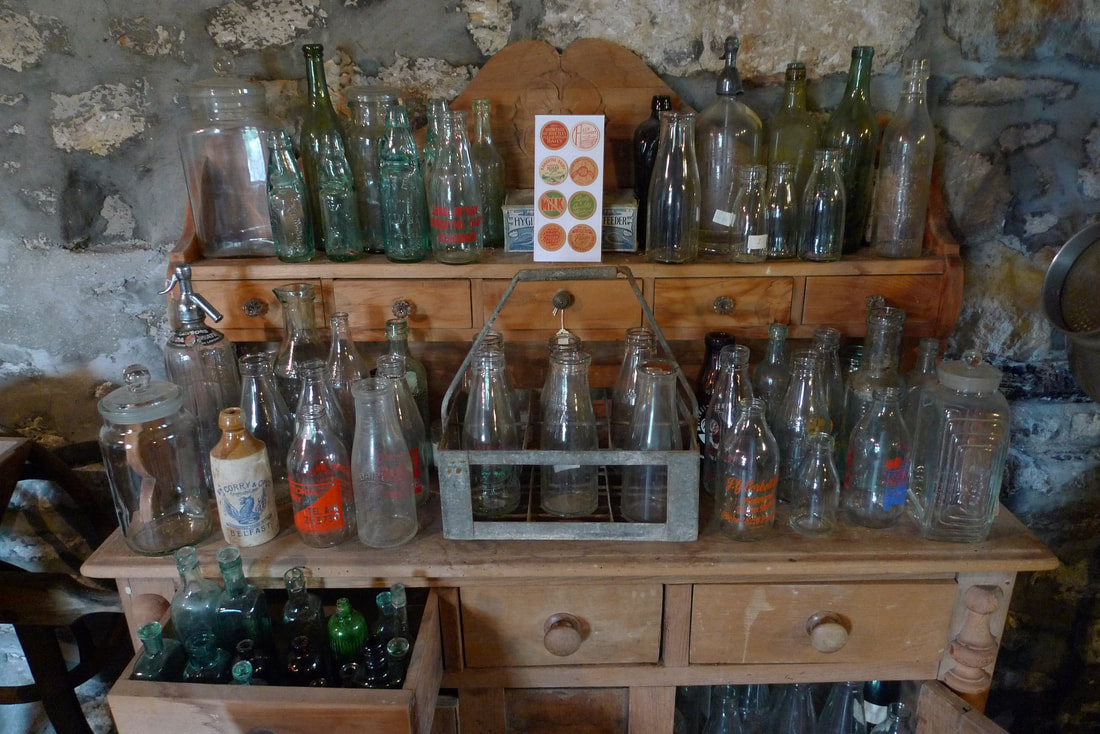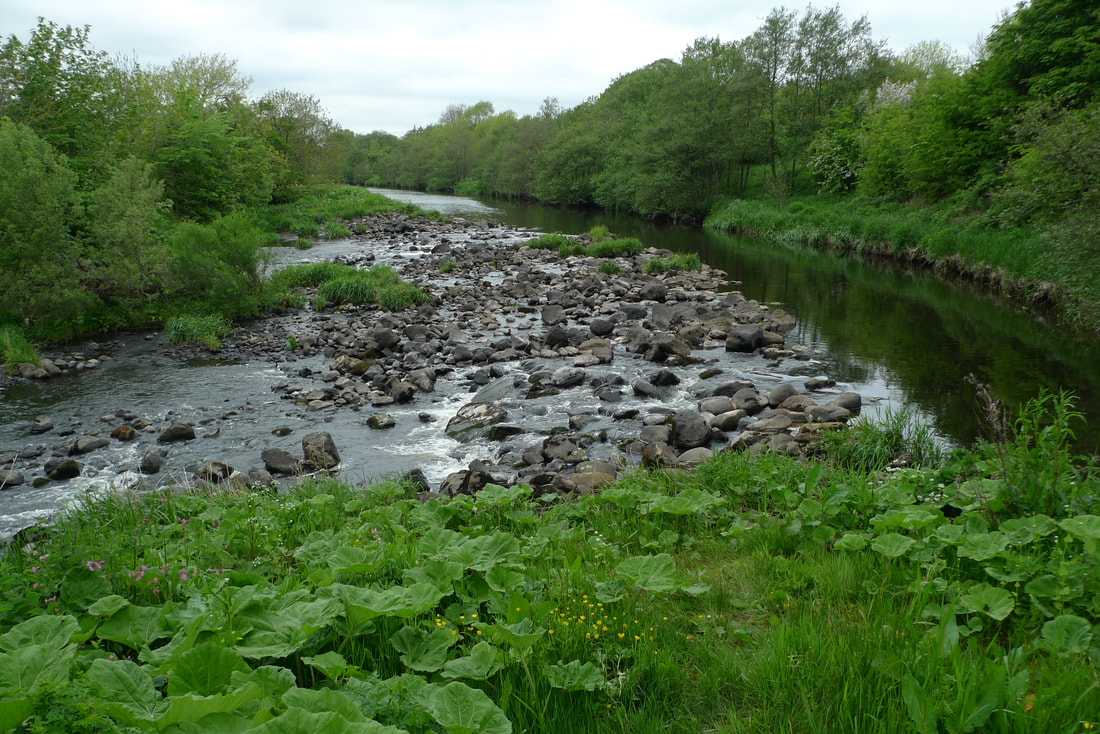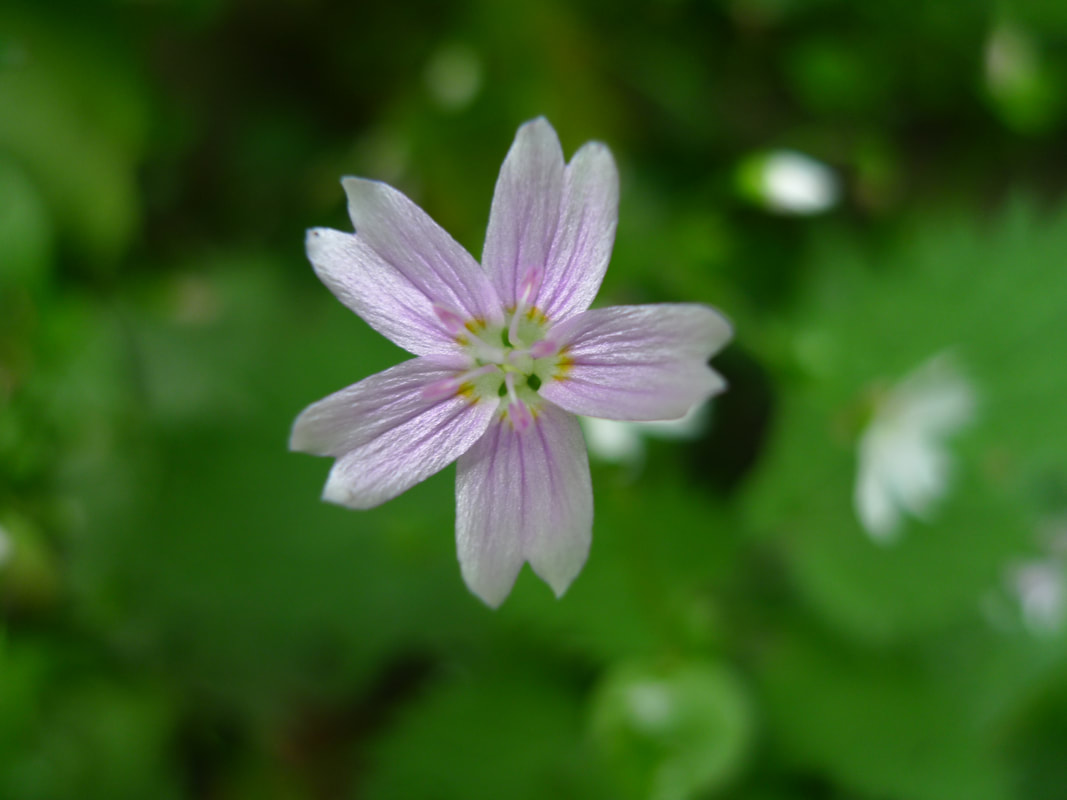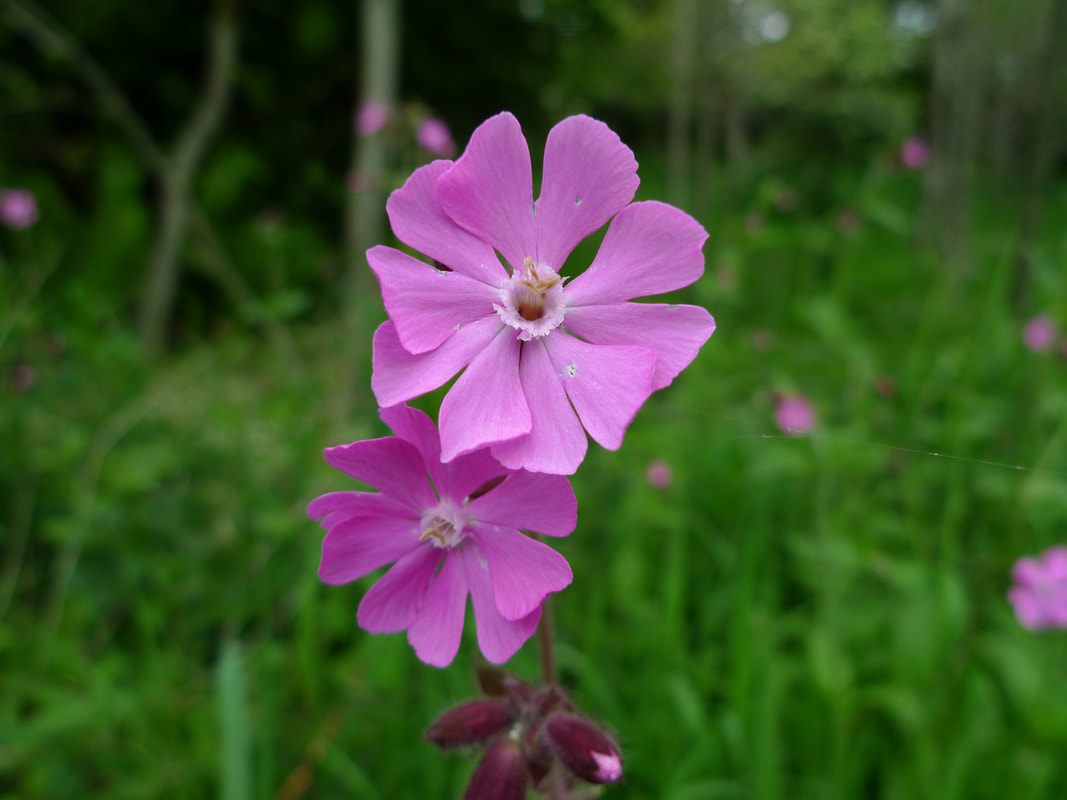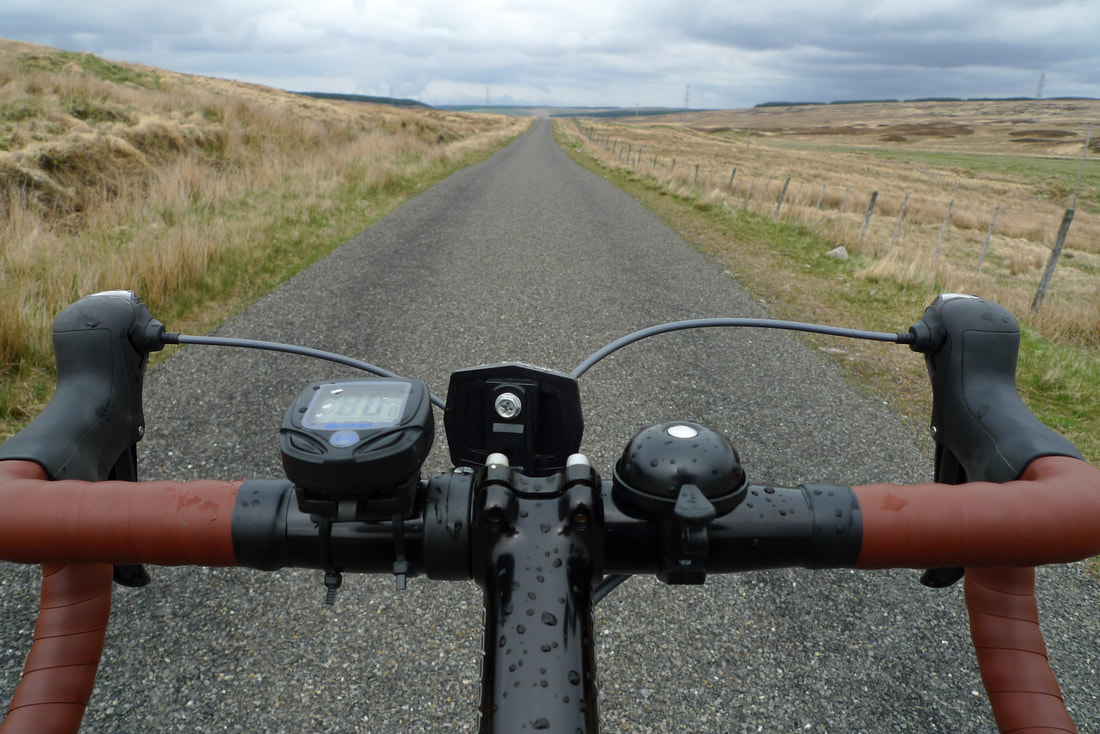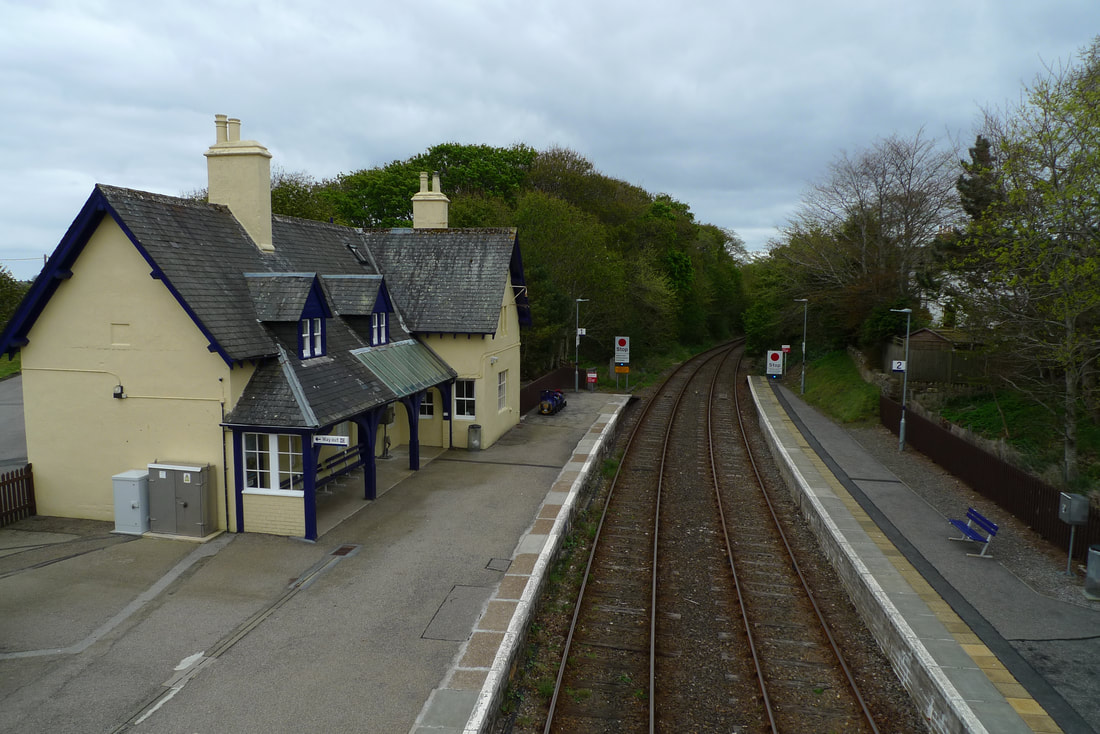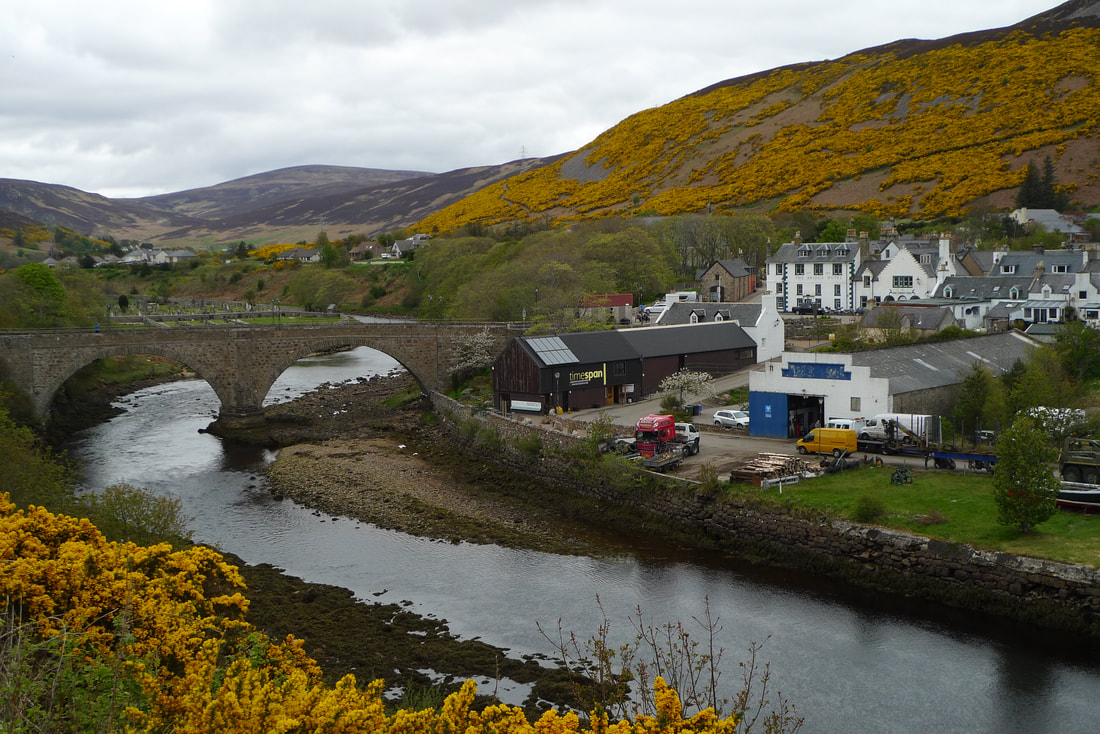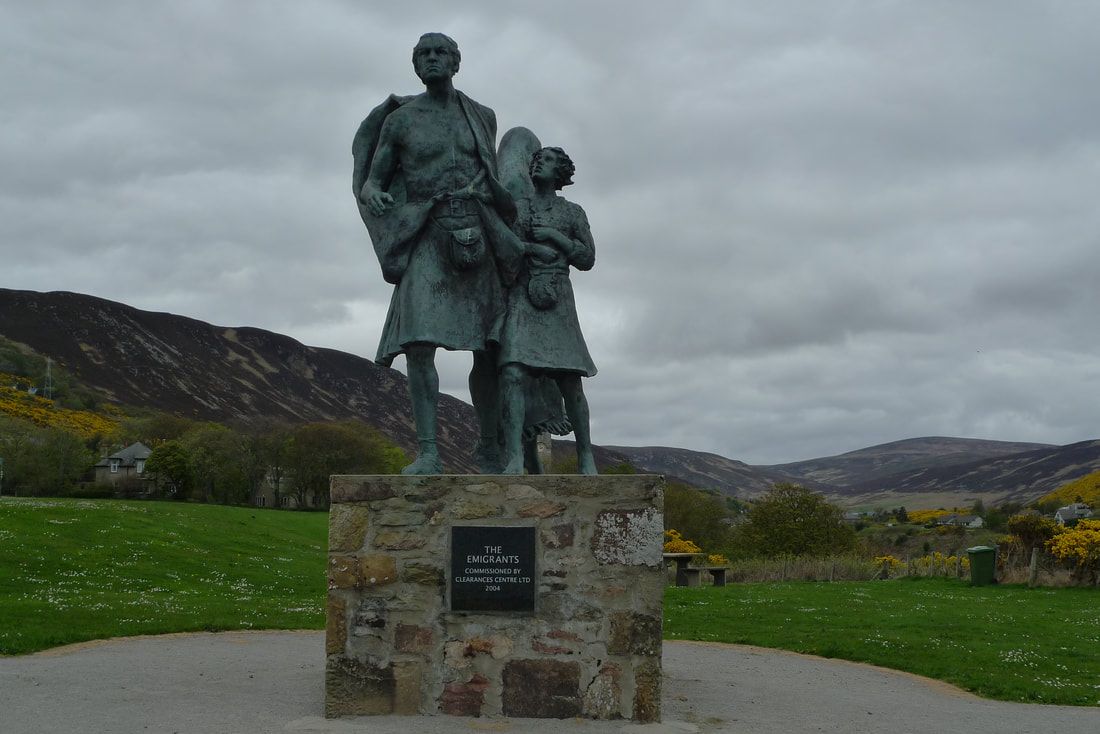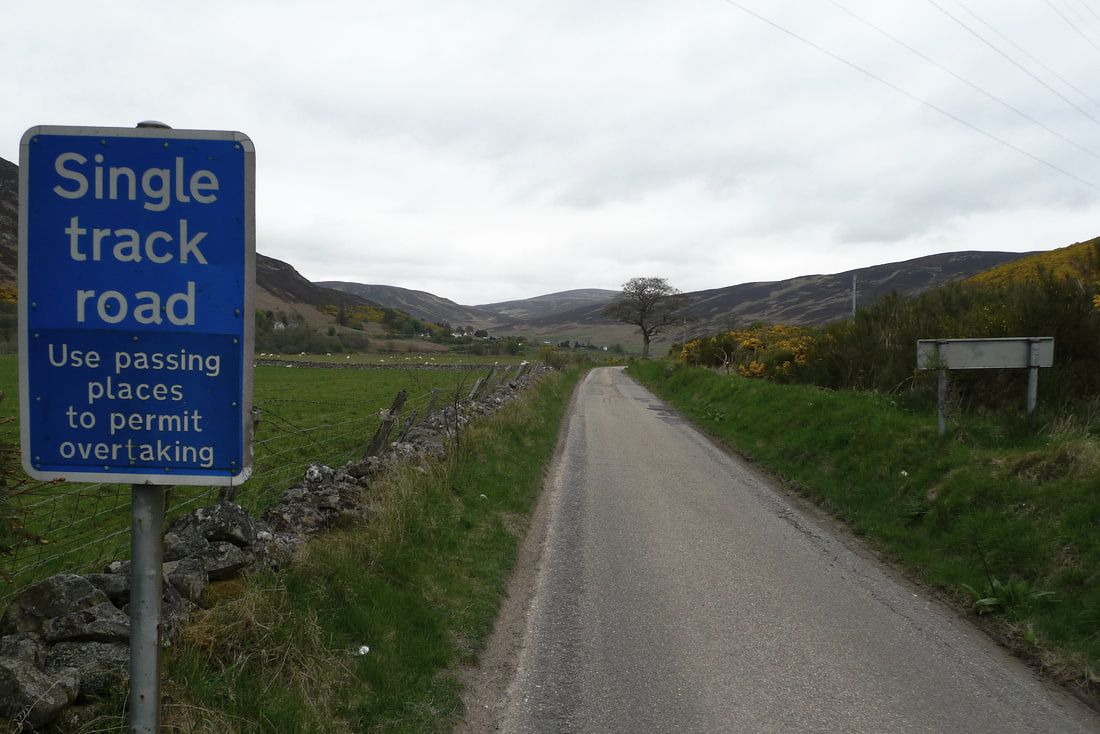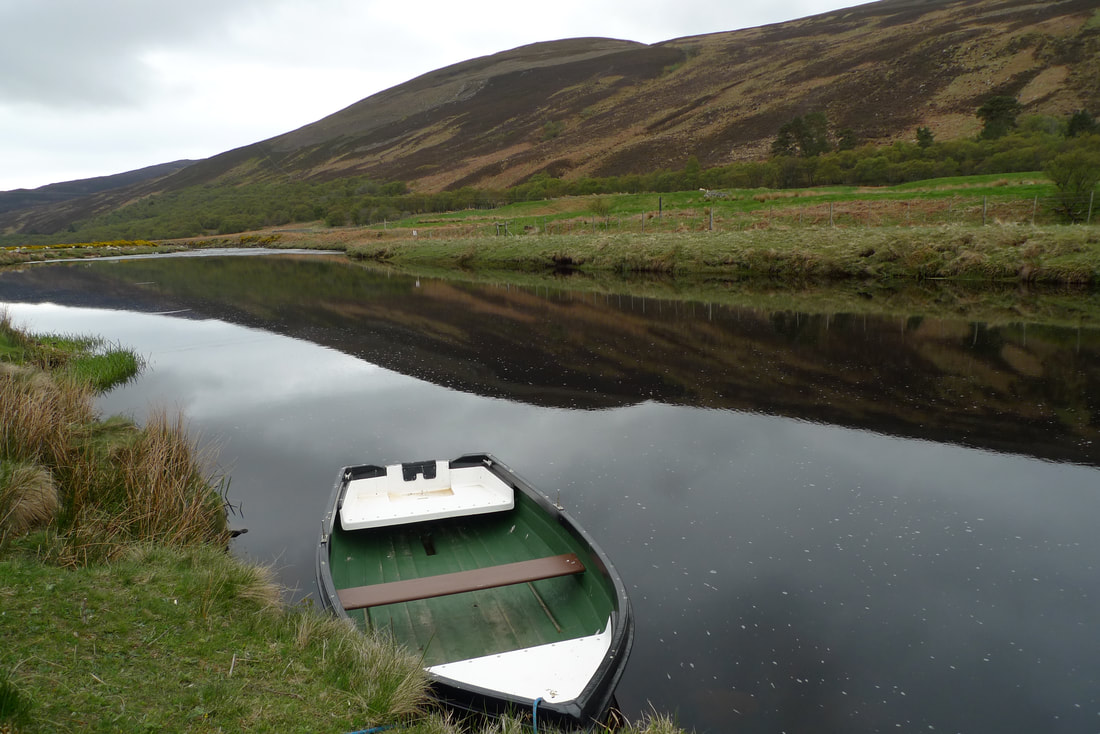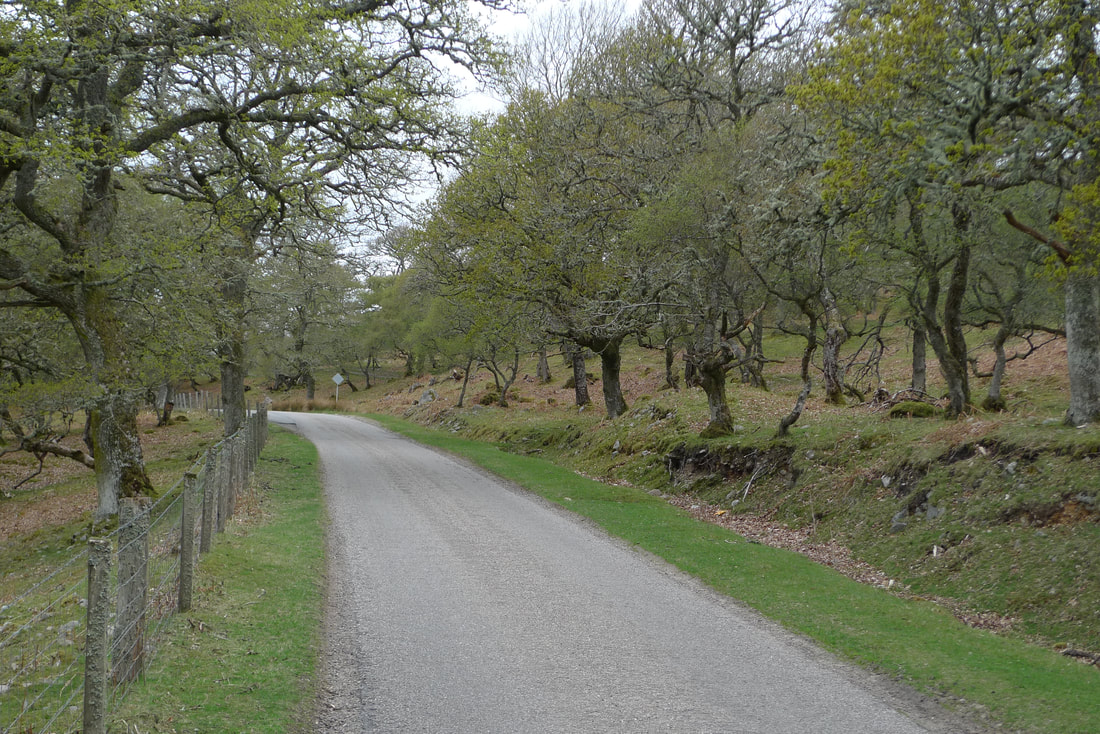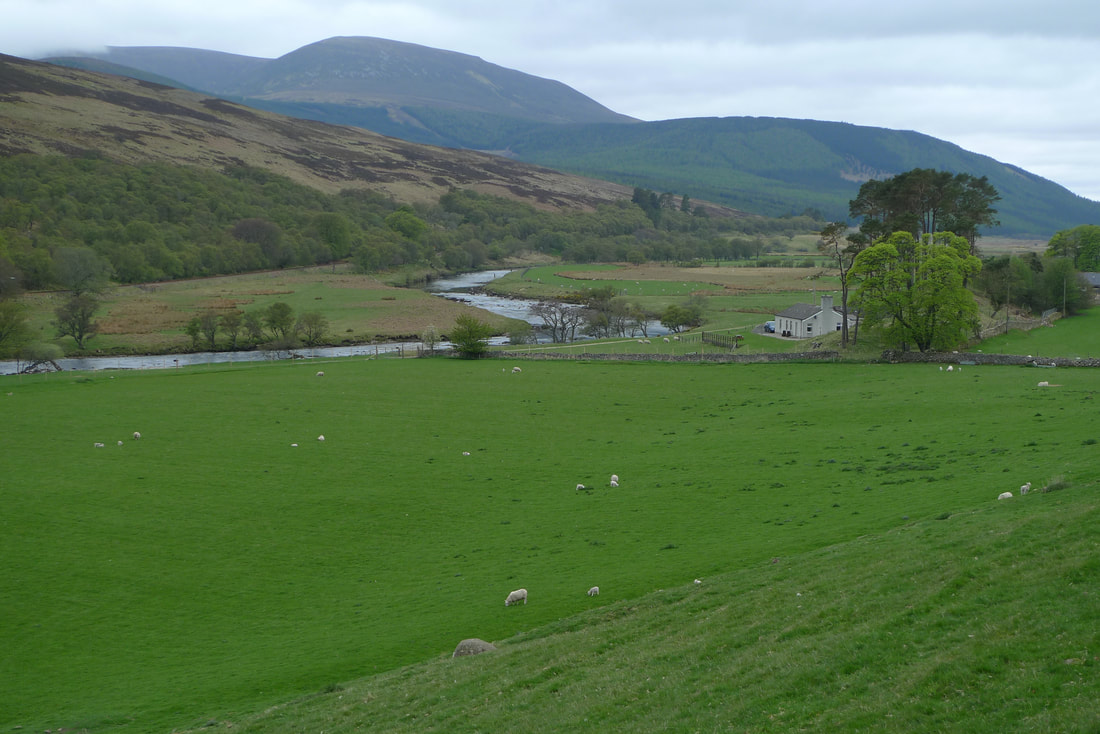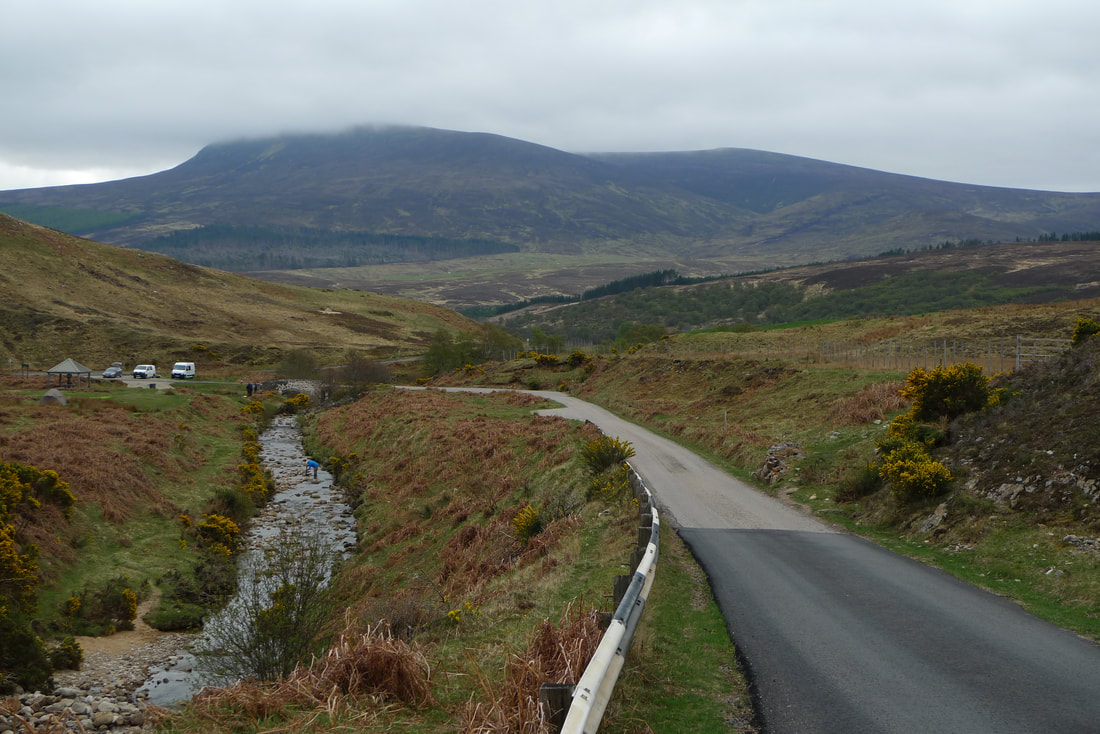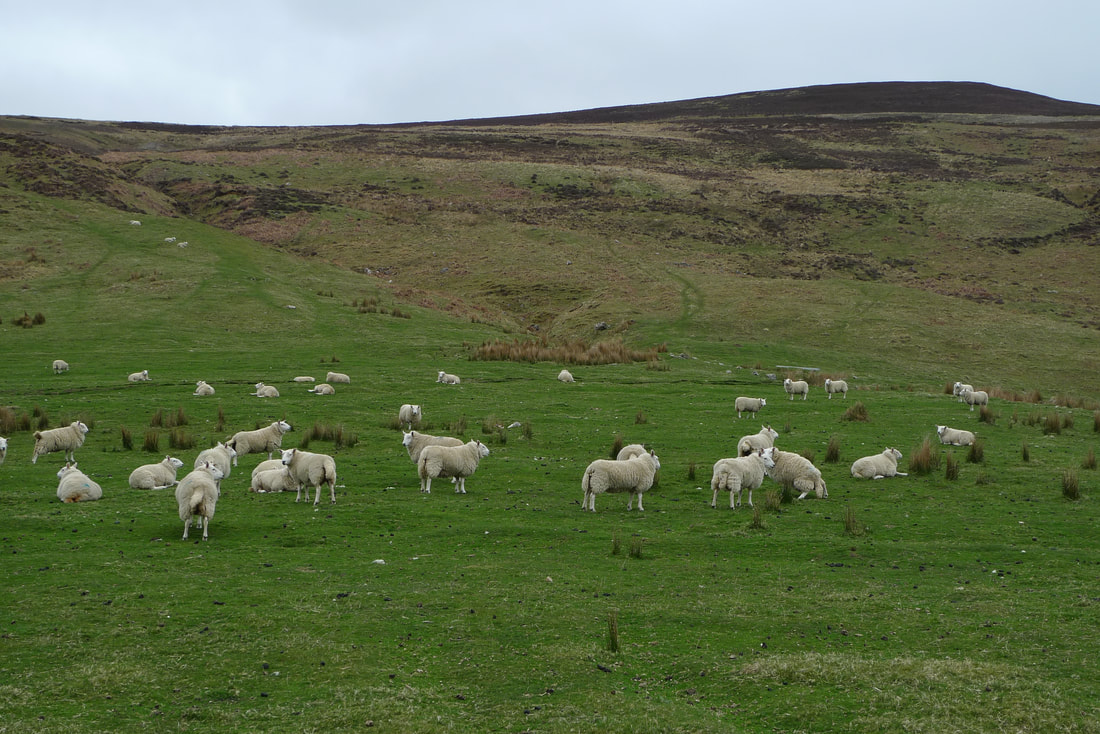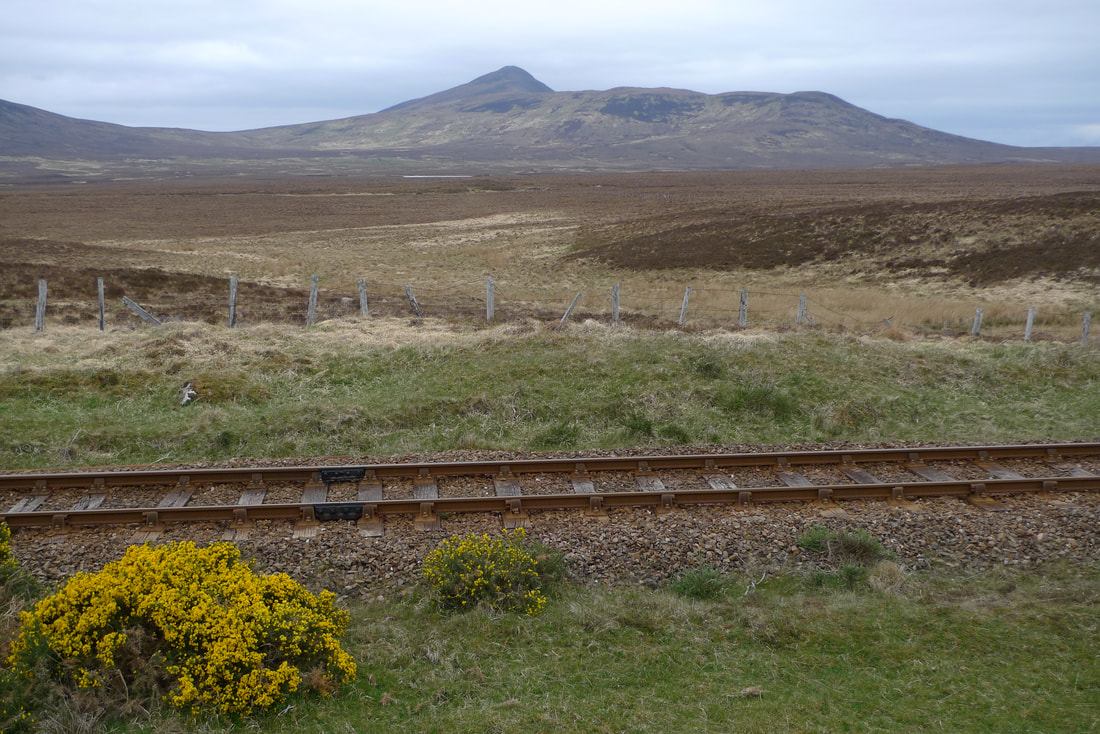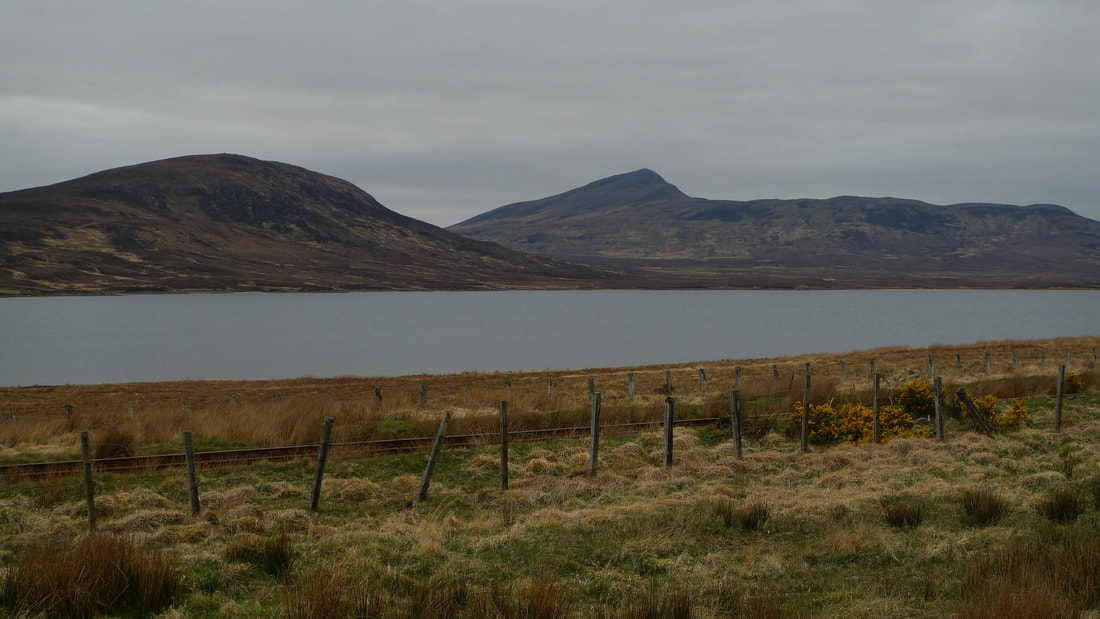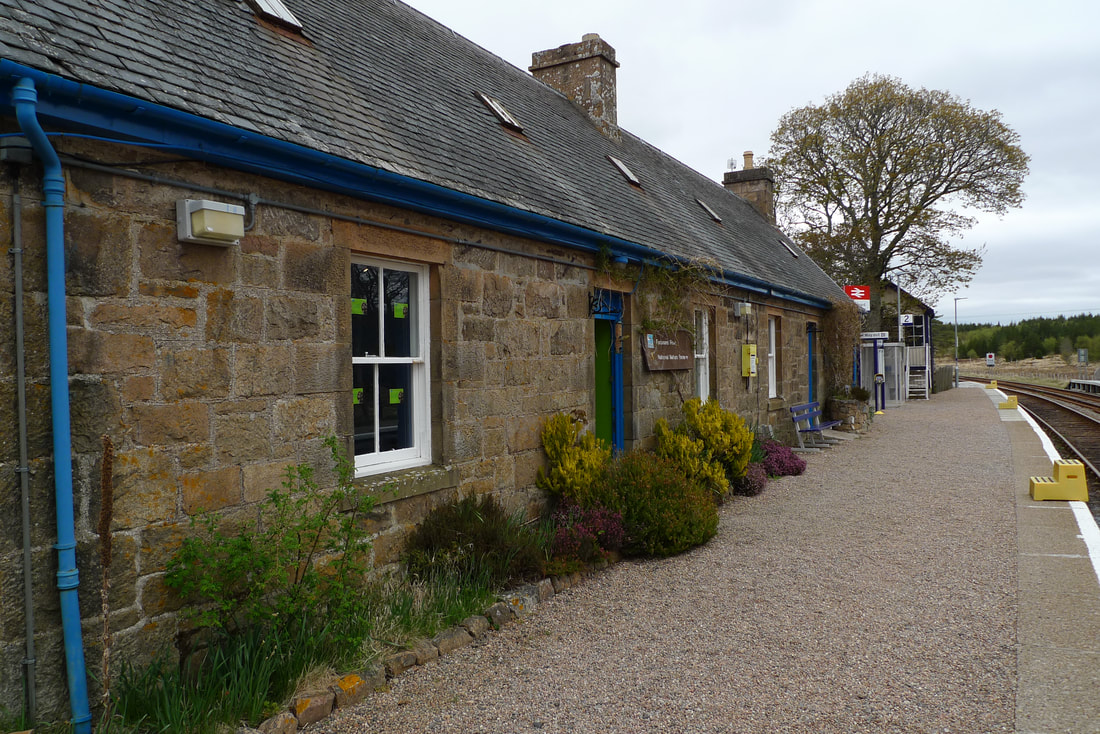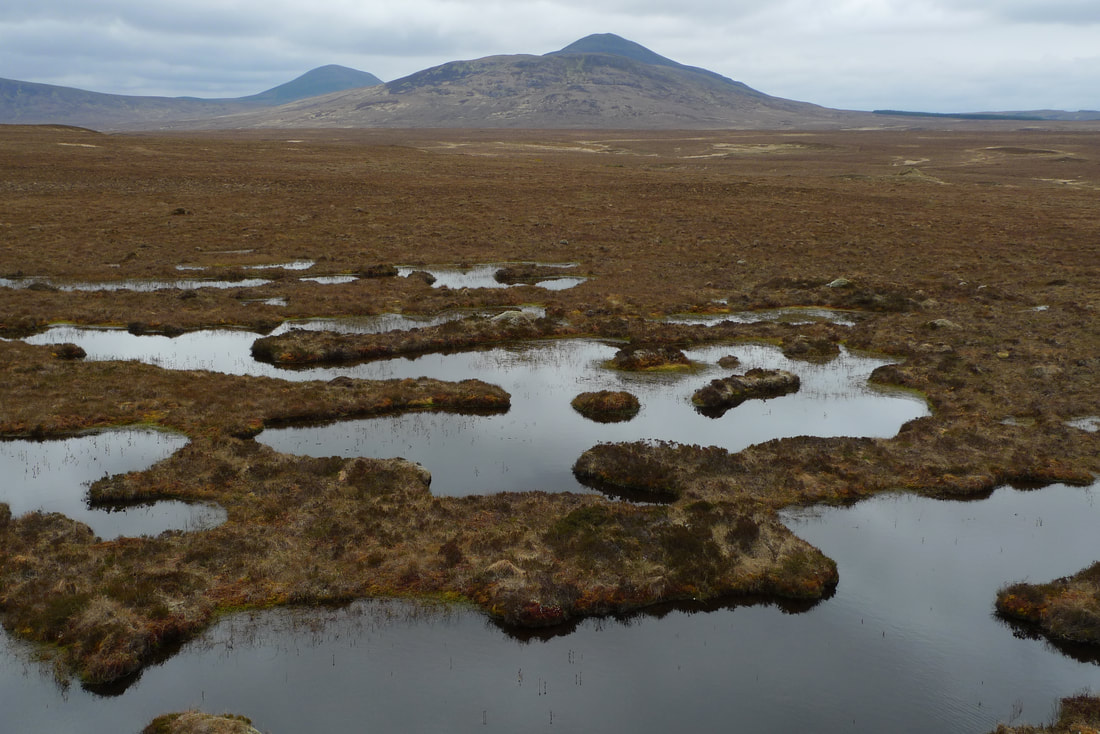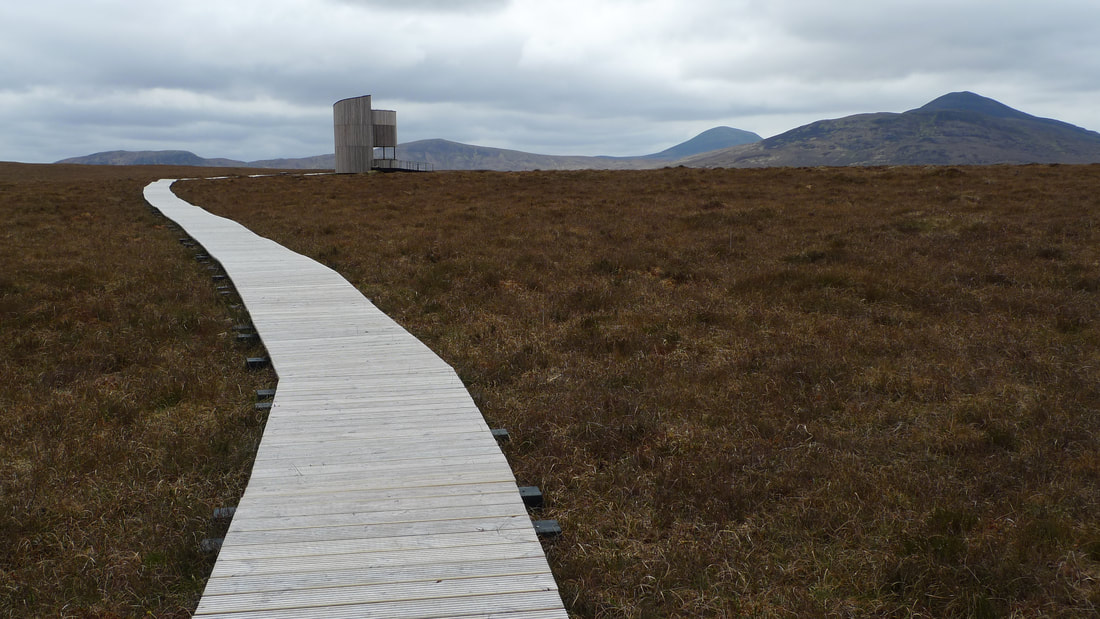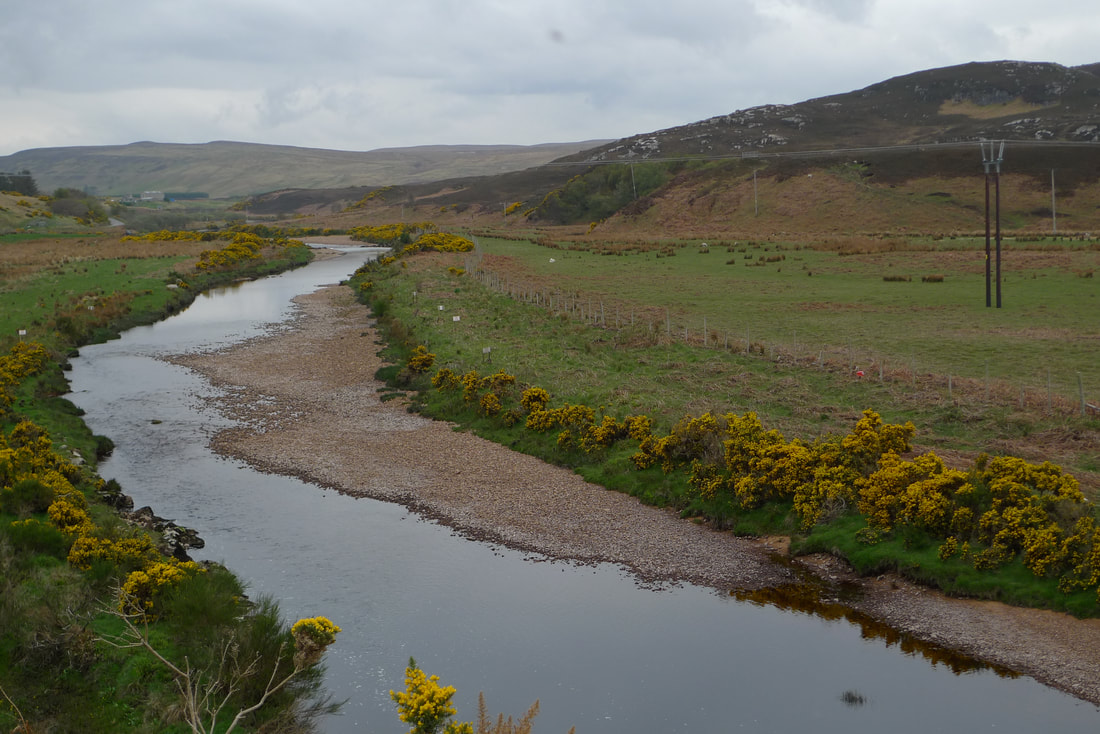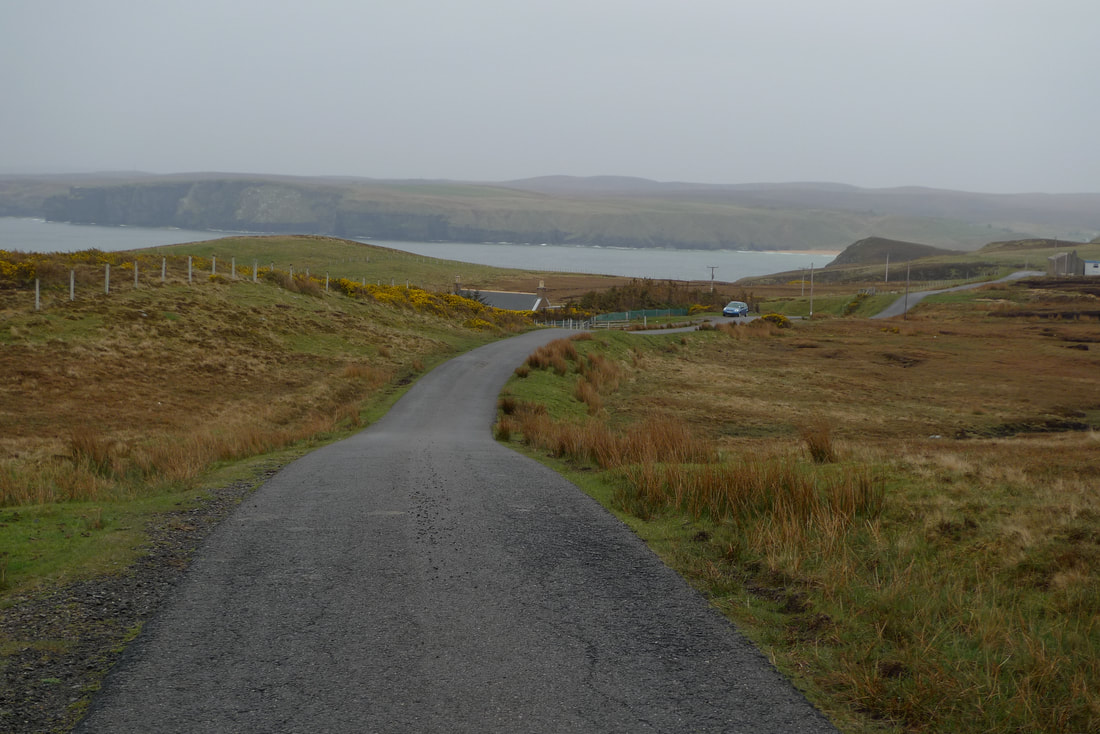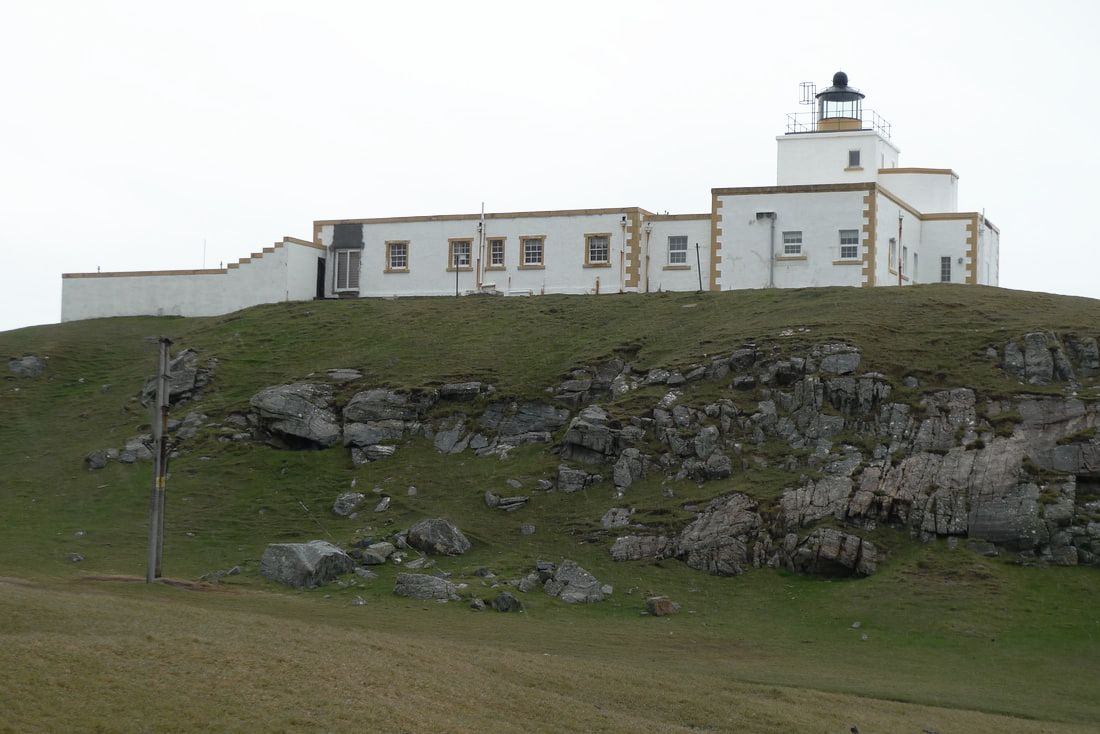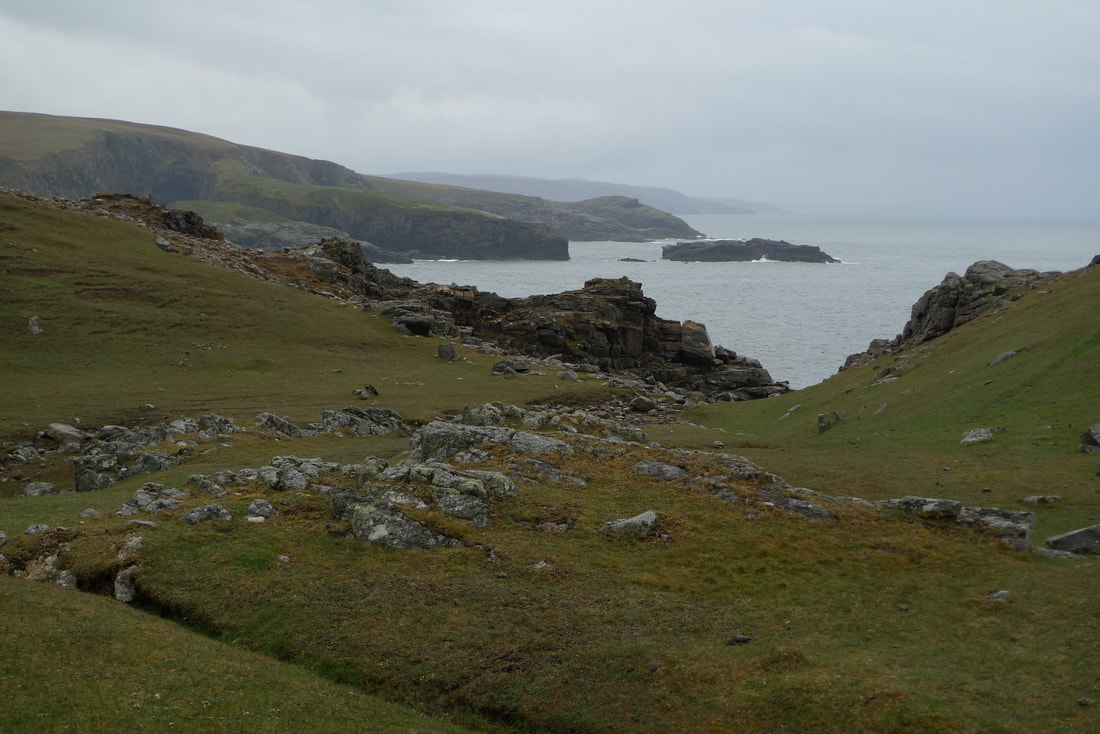|
If, like me, you have been using manual pumps you'll be amazed at what these Cycplus electric pumps can do. The first time I used them the thought that came into my mind was 'game changing.' I considered getting rid of my manual pump. Read on to find out if I did!
Use my affiliate link to get a 5% discount from Cycplus. Use the code: COLINBAIRD. Electric power
The main difference between these pumps and a manual pump is electric power. The benefit of this is that it gets air into the tire quicker and with a lot less effort than using a manual pump.
The disadvantage is that, unlike a manual pump, the Cycplus pumps will run out and need to be charged. However, the charging time is really not that long:
If you get into the habit of charging them after use they'll always be ready for when you need them. On one charge the AS2 can inflate 700C25 tires to 80PSI 2 times. The AS2 Pro can do the same 4 to 5 times. The Pro Max around 7 times. Yes, a manual pump can inflate tires forever, but think about how often you need to inflate tires on a typical bike trip. Probably not that often. If you do need it more often, perhaps on a multi-day trip, there's a good chance you'll be able to charge the pumps. Think hotels, cafes and taking a power bank. Who wins? Use of electric power Cycplus: 1 Manual pump: 0 Speed and accuracy of tire inflation
The Cycplus pumps are very quick. Cycplus state the AS2 can get you up to 80PSI in 80 seconds. The Pro can do it in 50 seconds. The Pro Max has more power so can do it even faster. I did my tires to 65PSI and although I did not time it the job was done in seconds. I could not have done it in that time with a manual pump.
The other great thing is that the AS2 Pro and Pro Max have a digital display with the tire pressure. It means you can set the tire pressure you want and they'll fill the tire to that pressure. They'll automatically switch off when they meet the pressure. I thought this was fantastic because it's always guess work when using a manual pump with no gauge. I have to stop pumping to frequently feel the tires and make a judgement if the pressure is correct or not. The AS2 does not have the digital display, but it still pumps tires faster than a manual pump. It also wins on size, being the smallest of the AS2 models. Who wins? Speed and accuracy of inflation Cycplus: 1 Manual pump: 0 Smaller than a manual pump
The main difference between the Cycplus pumps and a manual pump is their small size. It means they take up a lot less space to store and are easier to carry around than a manual pump. The two smaller models can easily fit into pockets. The larger model, the Pro Max, is a bit bulkier but not by much.
Who wins? Size Cycplus: 1 Manual pump: 0 Noise and heat
These pumps are very noisy. I was surprised the first time I used them, but soon got used to it. I was concerned about disturbing neighbours, but then I reckoned it was no worse than all the other noisy machines you can hear in gardens like lawnmowers and drills.
The pumps can also get very warm during use. That's the reason there is a silicone cover on them, to protect your hands. You don't get any of these issues with a manual pump. but it's a small price to pay for all the other benefits you get from the Cycplus pumps. Who wins? Noise and heat Cycplus: 0 Manual pump: 1 Easy to use
The Cycplus pumps have instruction manuals, so there's some learning to do. You don't need to learn as much to be able to use a manual pump. However, once you've absorbed the Cycplus instructions and used the pumps a couple of times you are unlikely to need to refer to the manual again.
I've read other reviews that comment on converting the Cycplus pumps between Presta and Schrader valves being fiddly. To be fair, I also have to do that conversion with my manual pump. When I used the AS2 Pro and Pro Max I just put on the hose attachment, which meant I did not need to do the conversion to use it with a Schrader valve. If you are doing the conversion you'll probably only need to do it once unless you have tires with different valves. Being able to set the tire pressure on the AS2 Pro and AS2 Pro Max makes them a lot easier to use than a manual pump without a pressure gauge. You can accurately inflate the tire to your desired pressure. You are not relying on feeling the tires with your fingers to guess if the pressure is correct. Who wins? Ease of use Cycplus: 1 Manual pump: 1 Draw! Cost
The Cycplus pumps are expensive. The AS2 is around £60, the AS2 Pro around £84 and the Pro Max around £100 (July 2024 prices). A cheap manual bicycle pump will cost less than £5.
However, the Cycplus pumps are on a different level. I was super impressed by the AS2 Pro ad Pro Max. Being able to set the tire pressure to what you want and using the hose attachment meant you could just walk away and do something else. You do not even need to be there to hold it or turn it off, it will just turn off automatically when the tire pressure is reached. Yes, a manual pump is cheaper but with Cycplus you are getting an amazing tool that makes tire inflation fast, accurate and less of a chore. Who wins? Cost Cycplus: 0 Manual pump: 1 Conclusion
The Cycplus pumps are the clear winner when compared to a manual pump. Manual pumps win on price, but the e-pumps do the job of tire inflation so much better. If you can afford it then go for the AS2 Pro or Pro Max as they allow you to set the tire pressure you want to inflate to. It's up to you if you think you need the extra battery capacity and power of the Pro Max.
Did I get rid of my manual pump? Not quite. It's at the back of the shed as a backup, but I have a feeling I will never use it again, and it will soon be lost under many cobwebs. The Cycplus pump is how I inflate my tires now. Use my affiliate link to get a 5% discount from Cycplus.
0 Comments
Highlights
Getting there
Edinburgh to Kirkcaldy takes around 45 minutes by train. It's free to put your bike on the train, but some of the trains on this route need a reservation. My guide to taking your bike on the train can help you plan this.
Sit on the right-hand side of the train to get the coastal views. You'll cross the world-famous Forth Railway Bridge, an experience that never gets old no matter how many times you do it. Kirkcaldy promenade
The best place to ride your bike in Kirckaldy is the promenade. It runs along the shore for about 1 mile. It's traffic-free, wide a flat. You'll get some great views and a refreshing sea breeze.
It takes about 5 minutes to get to the promenade from the station. However, the roads leaving the station are not the best for cycling as they are quite busy with traffic. I ended up walking with my bike down Whyte Melville Road until I reached West Fergus Place. From here it's a straight ride down to the promenade. It's reasonably quiet for traffic, but does get busier the closer you get to the promenade. Merchants House for coffee
When you reach the end of the promenade cross the road to the Merchants House Cafe. The cakes are amazing. The boozy plum and chocolate cake I had was on another level. So tasty and there was enough to feed 2 people! Outside the cafe there's a small square with some seating. If it's sunny this is quite a nice spot, although it does feel like you are surrounded by busy traffic.
The building the cafe is in is one of the most impressive in Kirkcaldy. It was built by David Law, in 1590, a wealthy ship owner. There's a beautiful courtyard, accessed by a passageway to the side of the cafe. Quays and wharfs
Continuing to Dysart you can avoid some of the busy A921 by using the roads next to the harbour. There's not much to see here as the area has been developed into housing. The loud noise from the Carrs flour mill at least evokes something of the busy place this once was. 70% of the wheat for the mill is delivered by boat, so there's a good chance of seeing a vessel tied up here.
Pathhead Sands
After leaving the harbour you can cycle on the pavement. It is a shared use pavement, but this is not obvious. There is a white line down the middle of the pavement and this is supposed to communicate that one side is for pedestrians and the other for bicycles. There is a painted bicycle on one of the sides, but only at infrequent intervals and the white line is sometimes non-existent. Even though it can feel like you should not be cycling on this pavement you can take it all the way to Ravenscraig Park.
Or you can make a diversion down to the beach at Pathhead Sands. If you take the road into the Carr's Mill this will lead you on a rough path to the Sands. Park up your bike and take a walk on the beach. In Scotland, even right next to an urban centre, you are never far from the beauty of nature. The sizes, shapes, colours and textures of the pebbles on this beach are so lovely.
To continue the journey it's either a steep hill or lifting your bike up a lot of steps. I did the steps, but with a heavy bike it's hard work. The view down the steps to the beach and the sea was the reward for the effort.
Ravenscraig Park
Ravenscraig's combination of coastal views, forest and plenty of green space makes it a joy to explore. It's one of Scotland's great urban parks. A good quality path takes you through the park to get to Dysart.
Ravenscraig Castle is in one corner of the park. Although it's mostly a ruin, it's worth taking a look. This 15th century castle has 2 huge D-shaped towers and it was entered by a bridge over a defensive ditch.
Dysart Harbour
After leaving Ravenscraig Park you take the wonderfully named Hot Pot Wynd to reach Dysart Harbour. I locked up my bike and explored on foot.
The harbour is a lovely spot with plenty of bobbing boats and a cobblestone road. Outlander fans will know the harbour was used in one of the episodes. Look out for the boat shed covered in all kinds of fun paraphernalia.
If you head south, along the cobblestone path that runs the length of the harbour you'll reach a tunnel cut into the rock. This takes you to Ravenscraig Park beach. If you have a picnic this is a nice spot for it.
Lunch at the Harbourmaster's Cafe
The Harbourmaster's House is the most distintive structure at the harbour. Inside you'll find a great cafe. I had the mackerel pate with Melba Toast. It was the perfect dish for these surroundings. The white chairs and light colour palette of the interior give the place a feeling of summer by the coast. The windows were open and there was a gentle sea breeze drifting in.
Pan Ha' white houses
This row of 16th century white houses, with red roofs, faces the Firth of Forth. They have names that are evocative of their location- there's the Shore Master's House, the Tide Waiter's House, and the Pilot's House. It was my favourite part of this trip to walk the paths between the buildings and imagine the pleasure of living in such a place.
St. Serf's and the Tolbooth
The tower behind Pan Ha' is Saint Serf's. It's from the 16th-century and was part of a large church complex. If you go behind Pan Ha' you can get a closer look at the tower. You cannot go inside, but up close it's an impressive structure that I think looks more like castle than a church.
Just a short stroll away, the Tolbooth is another of Dysart's architectural highlights. It dates back to 1576 and had been the meeting place of the burgh council and the town's jail.
Kirkcaldy Galleries
Before you take the train home you should make some time for this art gallery and museum. It's right next to Kirkcaldy station.
The art on display includes works by the Scottish Colourists and the Glasgow Boys. In the museum you'll discover many fascinating things about Kirkcaldy. For example, it's famous for having Europe's longest street fair, with shows, rides and stalls. Kirkcaldy was also the world's largest producer of linoleum, a floor covering. At it's peak this industry employed 4000 people. The museum is engaging and accessible. I really enjoyed making my way around the displays. I adored the photograph of Kirkcaldy penny farthing cyclists. They are posing with their bikes, dressed in immaculate uniforms that reminded me of Victorian railway workers. They travelled with a bugler who signaled their mounting and dismounting, and warned pedestrians. What a sight they must have been! In today’s world, stress is a problem that many people struggle with seeking an escape. Aromatherapy spray bottles with essential oils are a very convenient and efficient way to deal with stress and for relaxation. In this piece, we will discover the benefits of essential oil spray bottles, the part played by glass bottle manufacturing companies in the production of them, and the benefits of buying essential oil roller bottles bulk.
Versatility One of the major benefits of essential oil spray bottles is their ability to be used in different forms of aromatherapy. Users can create their own personalized blends that will address their unique needs and desires, whether they are looking for relaxation, focusing or just boosting their energy. From lavender and chamomile to invigorating to peppermint and citrus, you can make a wide range of different blends. Glass Bottle Manufacturing Companies Glass bottle companies have a significant place in the making of good quality essential oil spray bottles. These companies are able to combine the latest manufacturing technologies with strict quality control processes to achieve the best in the market in terms of durability and performance. By employing top-grade materials and fine craftsmanship, glass bottle manufacturers can make bottles that are resistant to corrosion, leakage, and breakage, thus, the safety and integrity of the essential oils they hold is guaranteed. Customization Options In addition to that, glass bottle producers provide customization services for companies that want to design and produce their own packaging for essential oil spray bottles. The businesses have the ability to choose any bottle shape and size, and can even add custom colors or designs to create bottles that represent their brand and attract their target audience. Advantages For companies that are looking to economize their operations and reduce the costs, buying essential oil roller bottles in bulk has its benefits. The businesses take advantage of the bulk purchasing to access discounted prices per unit, thus accumulating substantial cost savings over a period of time. Besides, buying in bulk provides the necessary bottle stock for businesses, so there is no disruption in the production line. Convenience and Cost Savings With the essential oil roller bottle in bulk, businesses will find it easy to have an endless supply of bottles available whenever they need them. This is a way of doing away with the need for regular reordering, and therefore, it also reduces administrative burden associated with managing inventory levels. Furthermore, purchasing in bulk tends to mean lesser shipping costs per unit, thus, the more businesses can save on their costs. In conclusion, the use of essential oil spray bottles provide a convenient and effective method to achieve the benefits of aromatherapy. Through purchasing essential oil roller bottles bulk, businesses will be able to benefit from cost savings, convenience and of course, availability of the bottles to meet any customer demand. Selecting the right swimming pool heater is crucial in determining the duration of the swimming season and the comfort of the water. Since there are many types of pool heat pumps, choosing the right one may be a challenge. This buyer’s guide, based on the research, will guide you through the options to get the right swimming pool heater for your needs and pocket.
Various Pool Heaters The first thing that needs to be done when choosing a swimming pool heater is to know the various categories of heaters. The three main categories are solar heaters, gas heaters, and pool heat pumps. All have their own benefits and appropriateness based on your location, pool usage, and climate. Heat pumps are especially preferred for swimming pools because of their effectiveness and eco-friendliness. Efficiency In the case of pool heat pumps, energy efficiency is a major factor. A good pool heat pump can save you a lot of money in the long run while at the same time providing you with the necessary heat. Search for models with high energy efficiency and compare them based on the BTU output and COP (Coefficient of Performance). The COP of a swimming pool heater is the higher, the more efficient the heater is. Size and Capacity It is important to size your swimming pool heater properly in order to achieve the best results in heating. If the heater is too small, it will not be able to warm your pool adequately, resulting in constant use and thus, more stress. On the other hand, if the heater is too large, it will turn on and off frequently, which will not only decrease its efficiency and durability. It is advisable to seek advice from pool heat pumps specialists to establish the right size depending on the size of your pool and the desired temperature. Durability and Weather Resistance Another factor is the longevity of your pool heat pump. Select a swimming pool heater that is resistant to the prevailing climate of your region or the climate that is expected during the time of use. Search for aspects such as the outer casing being resistant to corrosion, especially if you reside in an area that has salty air. Some of the best pool heat pumps are usually backed by long warranty periods which are more of an indication of the product’s durability. Installation and operating costs Finally, think about the costs of installation and further operating expenses. There are some types of swimming pool heaters that are cheaper initially, for instance, gas heaters, but they are more costly to run than pool heat pumps. Heat pumps for pools may cost more initially but the monthly cost of operating them is often lower because of their efficiency. You should also consider these costs when making your decision and whether or not professional installation is available. Therefore, to choose the most suitable swimming pool heater, one has to consider the type of heater, efficiency, size, durability, and cost. Heat pumps for pools are known for their efficiency and environmental friendliness, which is why they are preferred by many people. If you are willing to spend some time and evaluate your requirements and the characteristics of various heaters, you will be able to maintain your swimming pool comfortable and appealing during any season. The current market of bag manufacturing is changing rapidly due to the introduction of automation in non woven bag equipment. Non woven bag machine manufacturers are right at the center of this revolution, improving every aspect of production to meet the increasing need for environmentally friendly bags. This change towards automation is not only enhancing the productivity of the manufacturing processes but also enhancing the quality and the sustainability of the end products. Here is a detailed look at how these technologies are transforming the industry as we know it.
Advanced Automation The use of fully automated non woven bag making machines is a significant development in the production process. These advanced machines developed by the top non woven bag machine manufacturers incorporate computer numerical control (CNC) systems and programmable logic controllers (PLC). This automation leads to accurate cutting, sewing, and printing, which increases the production rate and reduces the chances of human error and wastage of materials. Quality and Consistency Pertinently, quality and consistency are some of the most important aspects that can either build or mar the reputation of non woven bags in the market. Automated non woven bag equipment makes sure that every product that is manufactured is of high quality. Manufacturers of non woven bag machines have enhanced the use of sensors and vision systems that constantly assess and control the production process. This not only helps to guarantee that each bag is of high quality, but also helps to maintain consistency when producing large quantities of bags. Reducing Costs The most apparent benefit of automating non woven bag equipment is the ability to cut down on the cost of production. Robots lower the demand for manpower, which is one of the biggest costs in production processes in manufacturing industries. In addition, these machines are more efficient in the processing of materials than manual operations due to their speed. Sustainable Practices As the consciousness of the global community rises to the challenges of environmental degradation, so does the focus on green manufacturing. Non woven bag machine manufacturers are at the forefront of green manufacturing by designing machines that use less energy and resources. Also, the use of automated machines is accurate in its usage of raw materials, which reduces wastage and makes the production process environmentally friendly. Adapting to Market Needs Flexibility is a significant factor in the constantly evolving retail environment, and the ability to adapt to new trends is vital. The contemporary non woven bag making machines provide great versatility to the producers. They can quickly and easily change between different bag sizes, styles and designs without having to spend a lot of time on setup adjustments. In sum, the automation of non woven bag equipment by non woven bag machine manufacturers is revolutionizing the bag manufacturing industry by improving productivity, quality, and eco-friendliness. With the advancement in technology, there is a great prospect for further development of non woven bag manufacturing, which will help the industry to be on the forefront of technological and environmental advancement. Paris, the City of Light, is not just a haven for art lovers and history buffs but also a paradise for cycling enthusiasts. With its blend of iconic landmarks, charming streets, and scenic parks, Paris offers a unique and delightful experience for cyclists. Whether you're pedalling past the majestic Eiffel Tower, exploring the opulent gardens of the Versailles Palace, or cruising along the picturesque Seine River, every turn reveals a new facet of the city's beauty. This guide highlights the top 10 cycling spots in Paris, perfect for both leisurely rides and exhilarating adventures. Ready your bike, don your helmet, and embark on a journey through the heart of one of the most beautiful cities in the world.
1. Eiffel Tower to Champ de Mars Start your cycling adventure at one of Paris’s most iconic landmarks, the Eiffel Tower. The area around the Eiffel Tower, particularly the Champ de Mars, offers wide, well-maintained paths that are perfect for cyclists of all levels. As you cycle through the gardens, you’ll find ample spots for picnics and relaxation, making it an ideal place to begin or end your ride. If you plan to visit the tower itself, make sure to secure your ticket for Eiffel Tower in advance to avoid long lines. The view of the Eiffel Tower from different angles as you pedal along is simply unparalleled, and the lush greenery of Champ de Mars provides a refreshing escape from the city streets. Early mornings or late afternoons are the best times to avoid crowds and enjoy the serene atmosphere. 2. Bois de Boulogne Escape the urban hustle and bustle in Bois de Boulogne, a sprawling park on the western edge of Paris. Covering over 2,000 acres, this vast green space features more than 15 kilometers of cycling paths winding through forests, around serene lakes, and past charming gardens. Cyclists can explore the Jardin d'Acclimatation, a children’s amusement park, or visit the Fondation Louis Vuitton for contemporary art exhibitions. The park’s diversity, from open meadows to wooded areas, offers a varied and enjoyable cycling experience, making it a favourite among locals and tourists alike. 3. Versailles Palace and Gardens No cycling tour of Paris is complete without a visit to the Versailles Palace. The grandeur of the palace itself is matched only by its expansive gardens, which are perfect for cycling. The meticulously landscaped gardens cover over 800 hectares and feature ornate fountains, grand sculptures, and picturesque groves. Cycling through the gardens offers a unique perspective on the opulence and beauty of French history. The Grand Canal, a large artificial lake, provides a stunning backdrop for a leisurely ride. Plan to spend a few hours exploring the area, as there’s plenty to see and appreciate. Don’t forget to purchase your Versailles tickets in advance to ensure a smooth and enjoyable visit. 4. The Seine River Path For a quintessential Parisian experience, cycle along the banks of the Seine River. This scenic route offers breathtaking views of some of the city’s most famous landmarks, including Notre Dame Cathedral, the Louvre, and the Musée d'Orsay. Dedicated cycling paths along the river ensure a safe and enjoyable ride, with plenty of opportunities to stop and take in the beautiful surroundings. The Seine River path is particularly enchanting in the early morning or late evening when the light reflects off the water and the city’s architectural marvels are illuminated. 5. Luxembourg Gardens Located in the heart of Paris, Luxembourg Gardens is a favorite among locals and tourists alike. The gardens’ well-maintained paths, lush greenery, and beautiful statues provide a picturesque backdrop for a relaxing bike ride. Cyclists can explore the various sections of the gardens, including the orchards, the English garden, and the rose garden. The stunning Luxembourg Palace, which now houses the French Senate, adds to the grandeur of the setting. After a leisurely ride, you can relax by the central pond or enjoy a coffee at one of the nearby cafés. 6. Parc des Buttes-Chaumont For a bit of adventure, head to Parc des Buttes-Chaumont in northeastern Paris. This park, one of the largest green spaces in the city, features hilly terrain, winding paths, and even a waterfall. The diverse landscape, with its steep cliffs, suspension bridge, and the Temple de la Sibylle perched atop a rocky outcrop, makes for an exhilarating ride. Experienced cyclists will appreciate the park’s challenging trails and the stunning panoramic views of the city from various vantage points. 7. Canal Saint-Martin Cycle along the trendy Canal Saint-Martin, known for its vibrant atmosphere and picturesque iron footbridges. The 4.5-kilometer route is lined with charming cafés, boutiques, and street art, making it a perfect spot for a leisurely ride. The canal’s tranquil waters and shaded paths provide a refreshing escape from the busy streets. It’s a great place to experience the bohemian spirit of Paris, with plenty of opportunities to stop and enjoy a coffee or a bite to eat at one of the many waterfront establishments. 8. Montmartre Though the steep hills of Montmartre may be challenging, the rewards are well worth the effort. This historic district, crowned by the stunning Sacré-Cœur Basilica, offers breathtaking views of the city. As you cycle through narrow, cobbled streets, you’ll encounter artistic history at every turn, from the iconic Moulin Rouge to the Place du Tertre, where artists display their works. The area’s unique charm and vibrant atmosphere make it a must-visit for any cyclist looking to experience the true essence of Paris. 9. La Coulée Verte La Coulée Verte, also known as the Promenade Plantée, is a unique elevated parkway built on a former railway line. Stretching over 4.5 kilometers, it provides a peaceful and scenic cycling route above the city streets, adorned with lush vegetation and art installations. The elevated path offers a unique perspective on Paris, with views of the surrounding neighbourhoods and glimpses into hidden gardens and courtyards. It’s a perfect spot for a tranquil ride, away from the hustle and bustle of the city. 10. Bois de Vincennes On the eastern edge of Paris lies Bois de Vincennes, a vast green space ideal for cycling. With its extensive network of paths, lakes, and the beautiful Château de Vincennes, this park offers a diverse and enjoyable cycling experience. The park’s attractions include the Parc Floral de Paris, a botanical garden, and the Lac Daumesnil, where you can rent rowboats. The serene environment and natural beauty of Bois de Vincennes make it a perfect place for a day of exploration and relaxation on your bike. Conclusion Cycling in Paris is a delightful way to explore the city’s rich history, stunning architecture, and vibrant culture. Each of these top 10 spots offers a unique glimpse into the many facets of Paris, from its tranquil parks and gardens to its bustling riverside paths and historic districts. So, grab your bike and discover the enchanting charm of Paris, one pedal stroke at a time. Whether you're a seasoned cyclist or a casual rider, these routes promise unforgettable memories and breathtaking views. Happy cycling!  Image by Faris Hamza from Pixabay When you are riding over a long distance, it’s important to not only look after yourself and your health by taking regular breaks and staying hydrated, but at the same time, always make sure that your valuables are being looked after in a comfortable manner. And one valuable thing each of us always carries with us, no matter where we are, is our smartphone. There are plenty of scenic routes in the UK where you can take your two wheels and explore.
They are so much more to us now than just a phone. We can video call family and friends wherever they are in the world, buy the latest fashion as well as play online casinos at sites like casinos.com. And although they are still a means of communication, when it comes to cycling, they can help with navigation or monitoring your speed and distance. And so how do you make sure that your phone is kept both safe and secure if you’re cycling over a long distance? Well, today we’re going to look at some solutions. Ways not to store your phone What an alarming number of people do when they’re cycling over a long distance is keep their phone in their back pocket, which is an absolute no-no for plenty of reasons. Depending on your posture when sitting down, it can also put pressure on the phone, and if it’s not secure, it may fall out of your pocket altogether. Depending on what speed and what ground it hits, it could be that your phone ceases to work and there you’ve got to incur an expense for getting a replacement. A popular alternative to look at, which can also keep your phone visible so you can see any notifications or calls coming through, is using a mount. What is a phone mount? A phone mount is a gadget usually made of sturdy metal or plastic that is mounted onto the handlebars or the top frame of a bike. Inside this mount will be a catch that can accommodate your phone. Typically, as smartphones can vary quite a bit in size, there will be a range of different types of mounts that cater to different phone types. Or there are sometimes mounts that are also adjustable, meaning that you can change and adjust them so that they encase your phone neatly and securely without any chance of it falling out and getting damaged. You want a lot of durability When you’re looking for a bicycle phone mount, there are plenty to choose from out there. And so you’re going to want to assess each of the mounts you come across against a set of criteria that is essential for any cyclist so that you end up picking the one that is right for you and your bike. The first aspect to bear in mind is durability. When you’re cycling over long distances, durability is absolutely key. You want the mount to be able to withstand the odd bump in the road or path for many, many miles without succumbing to any type of weakness. Versatility for recording Depending on whether you like recording your cycle runs, there are also some mounts out there that are a bit more versatile than others. What we mean by this is that they can adjust in order to present the perfect view of the road ahead, depending on what time of incline or decline you’re on. However, this may not be a box that you need to tick if you just want a mount that simply displays your phone screen and keeps it visible and securely fitted. Simplicity is key Lastly, you don’t want to opt for a phone mount that takes you a long time to both assemble and disassemble. At the start of a long bicycle ride, all you want to do is get going and not wait around while you put your phone mount together. Likewise, at the end of a long and exhausting cycle journey, there will be nothing you want more than to put your feet up and rest. And so having the frustration of spending hours trying to disassemble your phone mount is not what you want. So you want one that is quick, simple, and easy to use. In Summary If you’re an avid cyclist and you take your smartphones on your journeys with you across long distances, you’re definitely going to want to take a look into getting yourself a phone mount. It will make your trip so much easier, and it also means that your phone is visible and that you are reachable by anyone who wants to get in touch with you. Likewise, it gives you the added reassurance that your phone is safe and is less likely to get damaged, lost, or stolen as you traverse many miles on your two wheels.  Photo by Munbaik Cycling Clothing on Unsplash Cycling is a popular pastime in Scotland for a good reason: breathtaking routes through diverse landscapes that are difficult to find anywhere else in the world. Before you set out on a cycling trip through Scotland, it's important to ensure you bring along the right technology. Doing so will allow you to have the best experience possible while making your rides safer, more efficient, and enjoyable. In this article, we look at some of the high-tech gear you should bring along with you on your next cycling adventure through Scotland. Smartphones It's a given that your smartphone will come with you during your travels around Scotland. You'd be hard-pressed to find a person who travels without one these days. However, your smartphone can be useful for more than keeping in touch with friends and posting your travel pictures on social media. If you don't want to splurge on a navigation device for your bike, your phone can serve as one, making sure you get from point A to point B without too much difficulty. You can also download apps to your phone to help track your performance, keep track of different stats, monitor your progress, and enhance your training efficiency. You can use accessories like Quad Lock and SP Connect to mount your phone on your bike to ensure you can keep your eyes on the road at all times while having it within your line of sight. At the end of the day, your smartphone can come in handy as a tool for relaxation and entertainment. If you're a gamer, you can use your smartphone to play all sorts of games online. For those who enjoy casino games, online poker can be a fun way to unwind in their free time while allowing you to keep up with your health goals. As a cyclist, you know how important it is to maintain healthy habits if you want to perform at the highest level. The same thing goes for your poker pursuits; things like sleep, a good diet, and exercise can keep you at the top of your game. Even if you don't aspire to be a professional poker player, being health-conscious is important to success at poker. The same goes for any game you decide to play, whether it's a battle royale title like Fortnite or a puzzle game like Candy Crush; forming healthy habits will ensure you have a good time and perform your best. Smart Helmets Everything seems to be smart these days, and that goes for helmets, too. The days of basic helmets are behind us; today's smart helmets integrate advanced technology to make rides safer and communication easier. These helmets have communication systems that make it possible to talk to and stay connected with other riders without stopping to use your phone. They also feature built-in LED lights to illuminate your way on dark paths and turn signals to help keep you safe in traffic and when you ride at night. Lumos and Livall BH60SE are two of the most popular smart helmet brands, but be sure to shop around and read reviews to find the best one for you.
Cycling Computers Serious cyclists won't want to leave home without a cycling computer. These gadgets track just about every performance metric you could imagine, including heart rate, power output, and cadence. Just as any good computer would, these devices allow cyclists to analyze their performance data and review their rides in detail, making it easy to identify areas for improvement. You can also connect many of these computers to other devices like smartphones and power meters to increase their utility. There are many cycling computers on the market, with top-rated models like the Garmin Edge series and Wahoo ELEMNT featuring advanced navigation, detailed performance tracking, and wireless connectivity. If you use them once, you probably won't want to go on another ride without them. Wearable Tech If you own a Fitbit or an Apple Watch, you're already familiar with the benefits of wearable tech. These high-tech devices have become a big part of modern cycling for a good reason: they allow cyclists to monitor their heart rate, calories burned, and sleep patterns, all valuable data they can use to improve their fitness. The best fitness trackers and smartwatches allow users to set goals and view their progress as they work to achieve them. They often come with navigation assistance and alerts that help cyclists stay informed without checking their phones. Besides the Apple Watch and Fitbit, the Garmin Forerunner series is a favorite among cyclists. Long-distance movie nights are very much as advertised. You and your companion log in to your preferred entertainment channel and enjoy the same television show or movie together. Most couples additionally use phone calls, video calls, text messages, internet messaging, or a chat room to talk about the movie while watching it. If you and your spouse cannot be in the same physical movie theatre or curled up on the same couch, this is the next best thing to a classic movie date with situs nonton film gratis.
Get the same show or filmVideo streaming is your friend here! Make you and your partner have access to your choice streaming service. Some providers allow multiple users on the same account to stream from different devices/locations, while others do not, so double-check this before proceeding. Some streaming services are not available in some countries. In this situation, have one person rent the movie or a similar service, while the other watches it through a subscription. Of course, this stage excludes the portion of the date: choose what to watch - but we'll leave that challenge to you! Specify a time for your movie night.Finding a time that works for you and your spouse for a date night is difficult enough when you're in person, but what about long distance and possibly across time zones? It is a real challenge. The best time for a movie date night is when neither you nor your spouse have anything scheduled after the movie ends. You don't want to feel rushed; this is a date. We're biassed, but we believe Cupla is an excellent solution to this problem. It's calendar software that syncs automatically to identify the best date night times for both of you, regardless of your time zone. Make sure you're in syncWatching a movie that is even a second or two out of sync with your spouse over long distances is irritating. The punchline you're only now hearing is laughed at, the surprise of a horror movie reveal is spoiled and the entire experience leaves you and your partner feeling out of sync. Literally. A simple countdown to pressing "play" can work, but only if your connections and computer speeds are similar. Find out how to chatNobody enjoys it when people are chatting in a movie theatre, but you aren't there! Making a phone call, using Zoom, texting, or messaging are all excellent ways to communicate with your partner regarding the situs nonton film gratis. Without this crucial component, you're not having a date night. You're just watching the same thing simultaneously. There is a huge difference! Set a regular date at night timeThe beauty of long-distance date nights is that you can have them from anywhere; the difficult part is coordinating the time. The answer is to set aside an hour or two each week for spending time together. That way, you'll always have the chance to connect. Double-check the timing for the nightCommunication is essential in every relationship. But it is more critical in LDRs! Check with your spouse (and, if they're forgetful, remind them) that the times are still appropriate for them on the day. Be explicit about your commitmentsIf you're viewing a particularly long movie or series, make sure you both understand whether you're watching it together or if you can "skip ahead" independently. We understand that the temptation to watch just one more episode might be strong! But neither of you wants to ruin the show you both enjoy and have decided to make a central component of your committed time together. Be creative with themesIf you want to take your movie night to the next level, prepare themed food, beverages, lighting, and costumes! That way, you're not only watching the same thing together, but you can also share more of the experience and connect more deeply with each other (and the show/movie!). In a world where speed often reigns supreme and destinations blur by in a rush of planes, trains, and automobiles, there exists a quieter, more immersive way to experience the world: cycle travel. Picture yourself gliding along winding country lanes, the gentle whir of your bike wheels matching the rhythm of your heartbeat. Cycle travel is not merely about reaching a destination; it's about embracing the journey itself – the sights, sounds, and serendipitous encounters along the way. In this article, we'll delve into the allure of exploring the world on two wheels, uncovering the unique experiences and connections that await those who choose pedal power over horsepower. From forging meaningful connections with locals to savouring the sights and smells of far-flung landscapes, cycle travel offers a perspective that's as enriching as it is exhilarating. So, fasten your helmet and join us as we embark on a journey through the captivating world of cycle travel.
Switzerland: Cycling Through Alpine Splendor Welcome to the breathtaking landscapes of Switzerland, where every turn of the pedal unveils a scene straight out of a postcard. For those craving an adventure amidst alpine splendor, cycling through Switzerland offers an unrivaled experience of natural beauty and outdoor exploration. Switzerland's pristine lakes, majestic mountains, and picturesque villages create the perfect backdrop for an unforgettable cycling adventure. Whether you're a leisurely rider or a seasoned cyclist seeking a challenge, there's a route to suit every skill level and preference. From gentle lakeside paths to exhilarating mountain ascents, the Swiss countryside beckons cyclists to explore its wonders at their own pace. With a plethora of Switzerland tour packages designed specifically for cyclists, planning your dream cycling holiday has never been easier. Join a guided tour and let experienced local guides lead you on a journey through some of Switzerland's most scenic regions, from the shores of Lake Geneva to the heights of the Swiss Alps. Along the way, you'll have the opportunity to soak up panoramic views, savor local cuisine, and immerse yourself in the rich culture and heritage of this enchanting country. London: Pedaling Through History and Culture Welcome to the bustling metropolis of London, where the past seamlessly intertwines with the present, and every street corner holds a story waiting to be discovered. For those seeking to immerse themselves in the rich tapestry of history and culture that London has to offer, there's no better way to explore than on two wheels. London's vibrant streets and iconic landmarks are best experienced up close and personal, and cycling provides the perfect mode of transport for delving into the city's fascinating history and diverse cultural heritage. From the imposing Tower of London to the majestic Buckingham Palace, every pedal stroke brings you closer to centuries of royal intrigue, political upheaval, and architectural splendor. With a myriad of London tour packages tailored specifically for cyclists, exploring the city's countless attractions has never been easier. Join a guided bike tour and let knowledgeable local guides lead you on a journey through London's most iconic neighborhoods, from the historic streets of Westminster to the trendy markets of Camden Town. Along the way, you'll have the opportunity to uncover hidden gems, sample delicious street food, and soak up the vibrant atmosphere that defines this dynamic city. Paris: Cycling Through Romantic Splendor Welcome to the romantic streets of Paris, where the allure of cycling intertwines seamlessly with the city's timeless splendor. Picture yourself gliding along cobblestone streets lined with elegant Haussmannian buildings, the soft glow of streetlights casting a romantic aura over the iconic landmarks that dot the cityscape. Cycling through Paris is a journey through the heart of romance, where every pedal stroke brings you closer to the city's rich history, culture, and unmistakable charm. From the majestic beauty of the Eiffel Tower to the intimate cobblestone alleyways of Montmartre, each turn of the wheel reveals a new facet of this enchanting city. With dedicated bike lanes and a network of scenic routes, Paris invites cyclists to explore its hidden gems, bustling boulevards, and picturesque parks at their own pace. So why not hop on your saddle, feel the rhythm of the city beneath your wheels, and discover the romantic allure of Paris from a cyclist's perspective? Turkey: From Ancient Ruins to Timeless Landscapes Welcome to Turkey, a land where ancient ruins and timeless landscapes converge to create an enchanting tapestry of history and natural beauty. Cycling through Turkey is like embarking on a journey through the annals of time, where every pedal stroke carries you closer to the secrets of civilizations long past. From the bustling streets of Istanbul, where the echoes of empires resonate through ancient monuments like the Hagia Sophia and the Blue Mosque, to the rugged coastline of the Turquoise Coast, where pristine beaches and hidden coves beckon adventurers, Turkey offers a wealth of experiences waiting to be discovered. Venture inland to the otherworldly landscapes of Cappadocia, where fairy chimneys and ancient cave dwellings stand as silent witnesses to centuries of human history. Whether you're exploring the ruins of Ephesus, soaking in the healing waters of Pamukkale, or marveling at the natural wonders of Goreme National Park, cycling through Turkey promises an unforgettable journey through time and space. So saddle up, embrace the spirit of adventure, and let Turkey's ancient ruins and timeless landscapes be your guide to an experience like no other. Greece: Island-Hopping Adventures Next stop: the sun-drenched shores of Greece, where cycling takes on a whole new dimension amidst the idyllic landscapes of the Greek islands. Imagine cruising along coastal roads with the sparkling Aegean Sea as your backdrop, passing by whitewashed villages, ancient ruins, and secluded beaches along the way. Whether you're exploring the winding streets of Santorini, conquering the rugged terrain of Crete, or soaking up the laid-back vibes of Mykonos, cycling in Greece promises an unforgettable journey through history, mythology, and natural beauty. The Royal Highland Hotel in Inverness has a very special staircase. It's said to be the inspiration for the design of the Grand Staircase on the Titanic. If you've seen the film or pictures of the famous ship you'll definitely recognise this sweeping staircase. The hotel is right next to Inverness train station. In fact, it used to be called the Station Hotel. If you are waiting for a train and fancy a drink or something to eat my tip is to come in here. The surroundings are much nicer than the train station. You can sink into a cosy armchair and admire the staircase and the wall-mounted stag's head. It feels grand, but the atmosphere is relaxed and casual. It's a 3-star hotel, so there's no over the top formality. Come for a coffee, or a meal if you have longer to wait. I tried the vegetarian burger and it was very good. I loved the place mat my meal was served on. It had a drawing of the hotel, dated 1856, the year the hotel opened. There are horses and carriages parked out front. If you find yourself with a bit of a wait until your train then spend your time in here. There's not much in Inverness station, certainly nothing as nice as an armchair next to a Titanic staircase.
Highlights
Getting here
What's amazing about Glasgow, despite its size, is you never have to travel far to get into the countryside. To visit Dalgarven Mill it's a 30 minute train ride from Glasgow Central to Dalry in Ayrshire. Then you'll be riding your bike on a single-track road with no traffic, and enjoying the sweet scent of wildflowers.
It's only 3 miles from Dalry station to the mill, making this an ideal train/bike destination that does not need a massive amount of cycling. Bikes are carried free on this train and spaces are on a first-come basis. It's hard to avoid the word 'idyllic'
I try to stay clear of cliched adjectives, but in this case idyllic really is the best word to describe my arrival at the mill.
There is a steep downhill and the building suddenly comes into view, framed by the surrounding trees. The front of the mill is ivy-clad and has a distinctive red door. The water wheel at the side was turning. If you were asked to describe a Victorian-era grain mill this place is probably what you would come up with. Back to the 1880s
The waterwheel and the machinery it powers creates an authentic atmosphere. The clanking, the creaking. The building vibrates. It's like you've stepped back to 1880. Standing inside the mill, listening and watching the machinery was a much more evocative experience than reading about mills.
Costumes
It's not just the grain mill to see. The building is also home to the Museum of Country Life and Costume.
A mill feels a strange setting for Art Deco dresses and intricate lacework. It's not something you expect to see in these rustic surroundings. There are over 2,500 items, including shoes, jewellery and hats. Not all are on display at the same time, so you might see something different each time you visit. It's an exploration of how people used to dress, of clothing that was fashionable for a particular period in time and now long forgotten. For example, the Edwardian tea gown. It was worn in that long period of the day after you had finished your day's activities and before the evening meal was taken. Country life
The building is also full of objects that tell the story of 19th century Ayrshire rural life and work. There are lots of personal stories behind many of the items that make this engrossing to explore. For example, a mahogany wardroab where the Fergusson family cat snuck into Nan's hat drawer and had kittens.
I enjoyed seeing the carpenter's planes. These had the name of the owner stamped on them. The ones for apprentices had 'abodys' written on them, the Scots word for everyone's. The Scottish Bible chair
One of my favourite objects in the museum is the bible chair. It had a drawer underneath to keep the bible in. A flap on the armrest to place the bible. Each night, by candlelight, the father would read a chapter to the family. When we consider how we entertain ourselves now, it is hard to imagine a time when bible reading was an evening routine.
Old bicycles
This place can feel more like an antiques shop than a museum, but that's what makes it such an exciting place to explore. You feel like you are scanning for a rare find, something that catches your eye. I, of course, loved the old bicycles. There's also a great collection of earthenware jars and bottles.
Lunch and river walk
There's a cafe at the mill and if the weather is good the picnic benches out front are the choice location. It was here I enjoyed a very good lentil soup, egg mayonnaise sandwich and homemade carrot cake. It was such a relaxing, peaceful spot. A cat kept me company, but I think it was more interested in the birds flying in and out of the ivy on the mill's walls.
The riverside walk tops off a perfect day out. There's a path by the River Garnock, a river I'd never heard of before. It was a lovely walk where the variety of pretty wildflowers took me by surprise. I am sill guilty of thinking you need to travel far from Scotland's cities to find this sort of natural beauty. This place proves you do not need to join crowds of tourists at the usual hot spots to find something special.
Highlights of this route
Getting here. The Far North Railway
It takes around 2 hours and 45 minutes to travel from Inverness to Helmsdale on the Far North Line. Bikes are carried free on the train, but you need to book a space.
It's always special to travel on this line. Each time I do the journey I notice something new. On the approach to Invergordon there were seagulls nesting all over the place, even on top of railway control boxes. I had never seen that many gulls in one place. The station garden at Fearn was pretty with lots of flower pots. The platform at Ardgay had a waiting shelter made of logs with lots of nobbly bits on them. From Culrain to Ardgay I looked into a valley forest with a great variety of trees of different sizes and colours. 10 things to see and do in Helmsdale
Helmsdale is a village on the east coast of Scotland. It has a 10 foot tall bronze statue called The Emigrants, telling the story of the Highland Clearances. It's a powerful piece of art, capturing the emotion of people forced to leave their homes and make a new life overseas. The statue features in my blog 10 things to see and do in Helmsdale.
Single track road
You leave Helmsdale on the A897. Despite this being an 'A' road there's a blue sign that states three magical words- Single. Track. Road. These words mean a quieter road, adventure and great cycling ahead.
If you want to ride for miles and miles through highland scenery and mostly be on your own you've come to the right place.
After a few minutes I stopped at a rowing boat, tied up by the river bank. It's black, green and white paint scheme was fresh. Someone's pride and joy. The water was smooth as glass. Ahead, the river meandered by fields and hills. To be on a boat right now, in this place, felt like a good way to live life. Bridge at Kilphedir
Around 3.5 miles from Helmsdale there's a stone bridge crossing a stream. I noticed the fence next to the bridge had a style so that I could cross over to get down to the stream. It was wonderful down here. The sound of the water, the way it flowed over the moss and lichen covered rocks was hypnotic. I sat here for ages, just listening and watching.
I loved the variety of landscapes that I experienced on this route. I cycled a forested section where sheep roamed and grazed between the trees. Then minutes later I was looking down on a valley with fields, the twisting river and a backdrop of hills.
Gold panning, fishing and sheep
There's a lot of sheep activity on this route. They were all over the place reacting to me in different ways. Some ignored me and could not care less. Others stood their ground and stared me out. Then there were the sprinters who ran at top speed to get away from me, regarding me as a major threat.
Human activity is less noticeable. At one point I could hear a conversation coming from fishermen far away on the riverbank. I was amazed that their voices carried over such a distance. There's nothing here to stop voices travelling- no objects in the way or loud noises to drown them out. Further on I saw people panning for gold in the Kildonan Burn. This area is called Baile-An-Or, Gaelic for town of gold. It's where prospectors had camped during the Kildonan Gold Rush of 1869. Kildonan station
Around 10 miles from Helmsdale there's another station. You could use Kildonan station to shorten or vary this route. This is also one of the most special railway experiences in Scotland. The station is one of the least used in the country, full of charm and sits right next to the River Helmsdale.
An engineering marvel
Parts of this route get you close to the railway. Until now I had not appreciated the effort it must have taken to drive this ribbon of steel northwards. Seeing the tracks cross moorland and huge areas of wilderness was eye opening.
Scotland's better-known West Highland Line is often praised for the engineering effort required in places like Rannoch Moor. I had no idea the Far North Line was equally as impressive. Loch an Ruathair
Around 19 miles from Helmsdale you'll come to this loch. In a landscape that delights at every turn it was, I suppose, predictable that there would be a loch involved. The view across the water to the mountain peaks of Ben Graim Beg and Ben Graim is impressive.
The Flow Country
Around 5 miles more and you'll reach Forsinard station. The station building is the visitor centre for the Flow Country. This is an area of peat bogs that is incredibly important for its biodiversity. It's a rare place as only 3% of the planet is covered in peat bog. In the visitor centre I read that there are 619 species in the Flow Country and they are still being counted.
If you rushed through here in a vehicle or on a train this place could be written off as desolate. But, if you stop, take a look around and learn about the wildlife you'll soon change your mind.
The lookout tower is the highlight of a visit. It's reached by a wooden walkway. All you can hear are your foot steps on the planks and bird song. You climb the spiral staircase of the tower to get a great sense of how large the bog is. It stretches as far as you can see and it's mosaic of pools and lochans is beautiful. The peaks of Ben Graim Beg and Ben Graim make an attractive horizon.
Tea time
Around 5 minutes from Forsinard Station is the Forsinard Lodge Team Room. It's the only place along the route to get something to eat and drink. They have pasties, paninis, soup, cakes, scones and barista coffee. You can also book afternoon tea. Having a cappuccino in this part of the world feels extra special, especially after putting in the effort to cycle here.
Halladale River
It's around 13 miles to get to the end of the A897. This stretch has little to distract you from the simple pleasure of using your body to propel a bicycle. There are no massive hills to push up, it's mostly flat. There are enough twists and turns to keep it interesting, but it's easy to let your mind drift. The most memorable features are the endless blue skies and riding alongside the Halladale River. As you get to the end of the A897 you can see the river end its journey, emptying into the North Sea. It's a dramatic sight to mark your arrival to Scotland's northern coast.
Strathy Point
Leaving the A897 means the end of the single-track road and onto a 'proper' A-road. You turn left onto the A836 and although it is a bigger road it is not busy and feels safe for cycling. You will be on this for around 5 miles until you reach the turn-off for Strathy Point.
Then you are back on a single-track road, for about 2.7 miles to get to the lighthouse. It's a lovely road of ups and downs, twists and turns and superb views of the coast.
It's an interesting lighthouse. It was the last to be built, in 1958, for manned operation. It was also the first to run on electricity. Ending a long journey at these iconic white buildings feels special. A place on the edge of the land with cliffs, rocks and waves.
Portskerra
It does not need to end here. I've got one last thing to show you. On the A836 there's a turn-off for Portskerra. The final stretch of road down to the harbour is bumpy with lots of loose gravel and pot holes. The strip of grass down the middle a sign of how infrequently used this road is. It's quite steep so it's really enjoyable to let the bike roll and control yourself with the brakes.
Look out for the memorial to the local fishermen who lost their lives at sea in the storms of 1848, 1890 and 1918. The 1918 incident was particularly tragic as the men were elderly, many with no experience of fishing. Most of the younger men were away fighting in the Great War, so the older men were the only ones left to do the fishing.
How to get home
One option is to head to the train station in Thurso. It's 23 miles along the A836. I did this and found the road to be good for cycling, with a very low volume of traffic. Alternatively you could return to Forsinard train station.
Embark on an enchanting journey through the heart of Prague under the moonlight with a captivating night cruise on the Vltava River. Prague, known for its stunning architecture, historic bridges, and picturesque vistas, transforms as the sun sets, offering a unique perspective of the city's illuminated beauty. Prague night cruises not only provide an unparalleled sightseeing experience but also immerse you in the vibrant cultural and gastronomic traditions of the Czech capital. For those looking to explore the magical night-time atmosphere of Prague from the serene waters of the Vltava, excursions can be conveniently purchased on the alle.travel website, ensuring a seamless and memorable experience in one of Europe's most beautiful cities.
Why Choose a Night Cruise in Prague? A Unique View of Prague's Landmarks By night, Prague's landmarks, including Prague Castle, Charles Bridge, and the National Theatre, are beautifully lit, creating a magical backdrop for your cruise. The reflection of the city's lights on the Vltava River adds to the enchanting atmosphere, making for unforgettable memories and photo opportunities. Gourmet Dining and Entertainment Many Prague night cruises offer gourmet dining options, ranging from traditional Czech cuisine to international dishes, all served in the romantic setting of the river. Complement your meal with live music or cultural performances, adding another layer of enjoyment to your night-time adventure. Romantic Atmosphere For those seeking a romantic outing, a night cruise in Prague offers an intimate setting perfect for couples. The serene environment, stunning views, and the gentle sway of the boat provide the ideal backdrop for a special evening with a loved one. Top Prague Night Cruise Experiences 1. Gourmet Dinner Cruise Enjoy a sumptuous three-course dinner as you glide past Prague's illuminated landmarks. This cruise often features live jazz music, creating a sophisticated atmosphere for diners. 2. Historical Narration Cruise Gain insights into Prague's rich history with a guided narration cruise, where expert guides share stories and facts about the city's landmarks as you pass them by. What to Expect on a Prague Night Cruise Expert Guides and Live Commentary Learn about Prague's history, architecture, and culture from expert guides who provide live commentary throughout the cruise. Their knowledge enhances the visual experience, offering deeper insights into the sights you behold. Breathtaking Night-time Vistas As the boat meanders along the Vltava River, you'll be treated to stunning views of Prague Castle, Charles Bridge, and other key landmarks, all aglow against the night sky. A Comfortable and Luxurious Experience Modern cruise boats equipped with comfortable seating, panoramic windows, and outdoor decks ensure a pleasant journey. Some cruises also offer exclusive amenities like welcome drinks, gourmet meals, and private tables. Planning Your Prague Night Cruise Best Time to Go While Prague night cruises are available year-round, the best time to enjoy one is from spring to early autumn when the weather is mild, and the city is lively. Booking Your Cruise Advance booking is recommended, especially during peak tourist seasons. Consider booking online through reputable tour operators or directly with cruise companies to secure your spot. Dress Code and What to Bring While the dress code for most night cruises is casual, some dining cruises may require more formal attire. Always bring a camera to capture the scenic views and a light jacket for cooler evenings. Conclusion: A Magical Addition to Your Prague Itinerary A Prague night cruise offers a unique and memorable way to experience the city's beauty and charm. Whether you're enjoying a gourmet meal, listening to live music, or simply soaking in the breathtaking views, a night cruise on the Vltava River is an essential addition to your Prague itinerary. Embarking on a "Prague Night Cruise" promises an evening filled with beauty, history, and romance, making it an unforgettable part of your visit to the Czech capital. 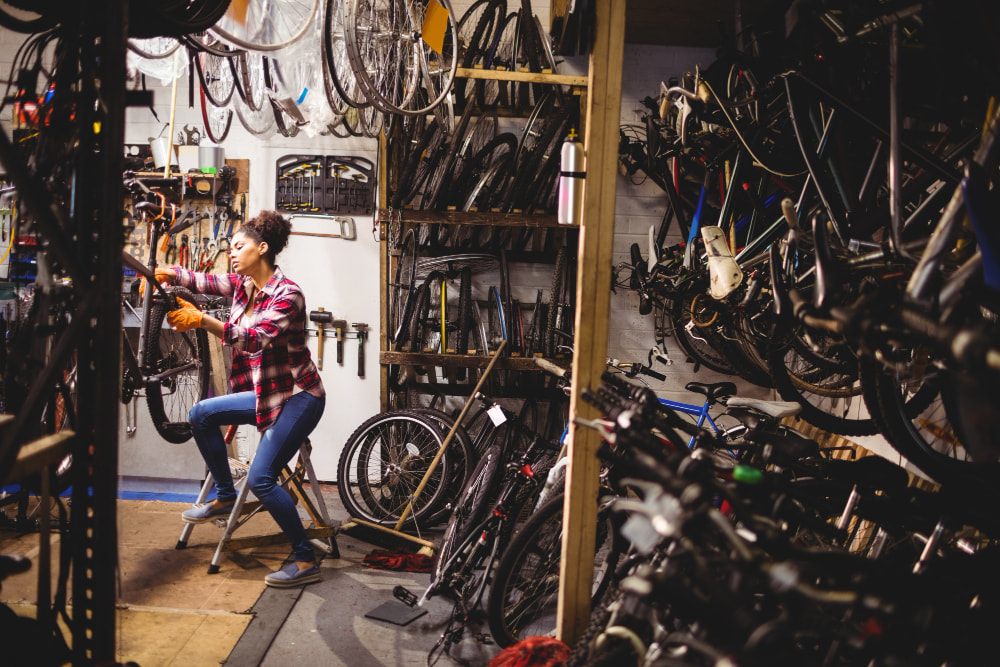 Image by peoplecreations on Freepik Whether you’re looking to get started with cycling or you’re simply replacing your old bike, diving into the second-hand market is the best way to do it without breaking the bank. However, there are still many important factors to consider before you can make a smart purchase, and that is exactly what this guide is going to help you with. Benefits of Riding a BikeFirst and foremost, cycling is an incredible activity that can help you lose body fat and keep a leaner physique, but also improve your mental health. Next, it is great for the environment, as it does not use any fuel and therefore it does not cause pollution. What’s more, if you opt for a pre-owned bike, you’re making the ultimate sustainable choice. Besides the fact that a bike requires no fuel, it also needs no heavy servicing and expensive parts that would give a boost to consumerism. All you need to do is learn how to clean your bike and stay on top of minor maintenance procedures. Finally, cycling has the power to lift your mind and spirit. It can even reduce stress and help relieve symptoms of depression. And if you connect with like-minded individuals, it can even be a great way to socialize. How to Make the Most of Your Bike ShoppingNow let’s get into the tips that will help you maximize the value of a pre-owned bike:
Figure Out the Type of Bike You NeedBefore you start browsing different models, think of the reason why you’re even looking to buy a bike. Once you figure out whether you need a commuter, road, or mountain bike, you will be ready to identify a few models that are ideal for your needs. You can then even go further and think about specific situations and activities that you’ll find yourself engaged with. So if you only need a bike to quickly get around, look for city bikes with narrow tyres. But if you’re planning to use the bike for the longer commutes between cities, you might even consider investing in an electric bike. Be Smart About BudgetingBudgeting is always a personal thing, and no one knows better than you how much you can spend. However, no matter the amount, try not to use all the money on the bike itself. A pre-owned does not come with a warranty, so you are the one who needs to pay for all future faults. That is why it is recommended that you set aside close to 10% of the item’s value to cover potential maintenance costs. Know Where to Look Your online search can be focused on several useful sources, including cycling forums and websites like Craigslist and eBay. Also, you can check out Facebook Marketplace, or you can even join local Facebook groups that are built around buying and selling bike gear. Finally, you should visit the local bike shops where you can explore the offering of used and refurbished bicycles. Try to See the Item in PersonIf you focus your search on web-based sources, you can easily be tempted by beautiful images that present flawless products. However, it is important to ask for realistic photos depicting the bicycle's current state. Even better, you should try to see the bike in person, if possible. That is the only way for you to get a clear picture of the item’s actual state. What to Focus OnBefore you jump on a seemingly excellent offer, take a look at a few essential components. Begin with the fork and then move on to the frame, paying close attention to the entire surface. For instance, if it is made of metal, check if there are dents in the frame, and look for paint blisters since those are signs of corrosion. Next, make sure the wheels are centred and that the sound of the wheel hub is smooth as they’re spinning. And while the wheels are spinning, make sure the discs or brake pads are not rubbing. Of course, you should also pay close attention to the brakes. Ideally, you should get a chance to hop on the bike yourself. Once you establish a solid opinion about the item based on its current state, you can either negotiate the price in case of damage, or you can be happy about the pre-owned gem you’ve just discovered. Getting a pre-owned bike is an exciting adventure, and as such, it can also be affected by several factors. As a shopper, be it online or offline, you will surely benefit from the tips and strategies listed above, and once you get your next two-wheeler, you will start to experience all the advantages reserved for all those who engage in cycling. |
Categories
All
Archives
July 2024
|































